
Hijack: A Pilot's Fact-Check
When my friends recommended Hijack, as a pilot, I was naturally intrigued by the show's aviation-focused storyline. Hijack, starring Idris Alba, is a thrilling TV series available for streaming on Apple TV+, where aviation security and hijacking take centre stage.
I'm usually not one to nitpick creative content, as I'm quite easily entertained. However, when I decided to watch this series with my wife, Hilal, I couldn't help but notice certain inaccuracies and inadvertently found myself pausing the playback to share them with her. To her credit, she listened patiently without a single complaint. Later, when my friends asked how I felt about the series, I was compelled to write down my observations. However, I believe I might have gone down a rabbit hole.
I have genuinely enjoyed many aspects of the series. The real-time pace is absorbing. Having lived in both Dubai and London in the past, I can relate to the locations as well as the flight route. The casting, from my point of view, is perfect. The writers have avoided falling into stereotypical plots involving terrorists from a certain background. Contrary to what you might think, I would recommend watching Hijack. However, if you are passionate about aviation, you may want to cross-check what you watch with this analysis.
In this article, I found 98 out of 129 findings to be inaccurate or implausible. It is extensive. Use the links below to navigate to specific episodes:
- Episode 1: Final Call
- Episode 2: 3 Degrees
- Episode 3: Draw a Blank
- Episode 4: Not Responding
- Episode 5: Less Than an Hour
- Episode 6: Comply Slowly
- Episode 7: Brace Brace Brace
Disclaimer
Before delving into these observations, I'd like to offer two disclaimers:
First, while I'm not an airline pilot nor type-rated for the Airbus 330 featured in the series, my insights are grounded in my aviation knowledge as an enthusiast and a traveler with over 300 flights, including those in regions depicted in the series. Additionally, I've accrued several hundred hours of simulator experience on the A320 and A350, along with private pilot experience. If an A330 or any Airbus pilot happens to come across this post and wants to share their experience, I would be more than happy to update my analysis.
Second, my comments are focused on aviation-related accuracy and specifics. I respect that the series' dramatic timeline is within the writers' creative domain, and my intention is not to critique their storytelling choices. I understand that for the average viewer, the series may be thoroughly enjoyable as is, and a hyper-accurate depiction of aviation might have affected its reception negatively. However, it's worth noting that in some instances, a slightly more accurate portrayal could have enhanced the overall experience without compromising the storyline.
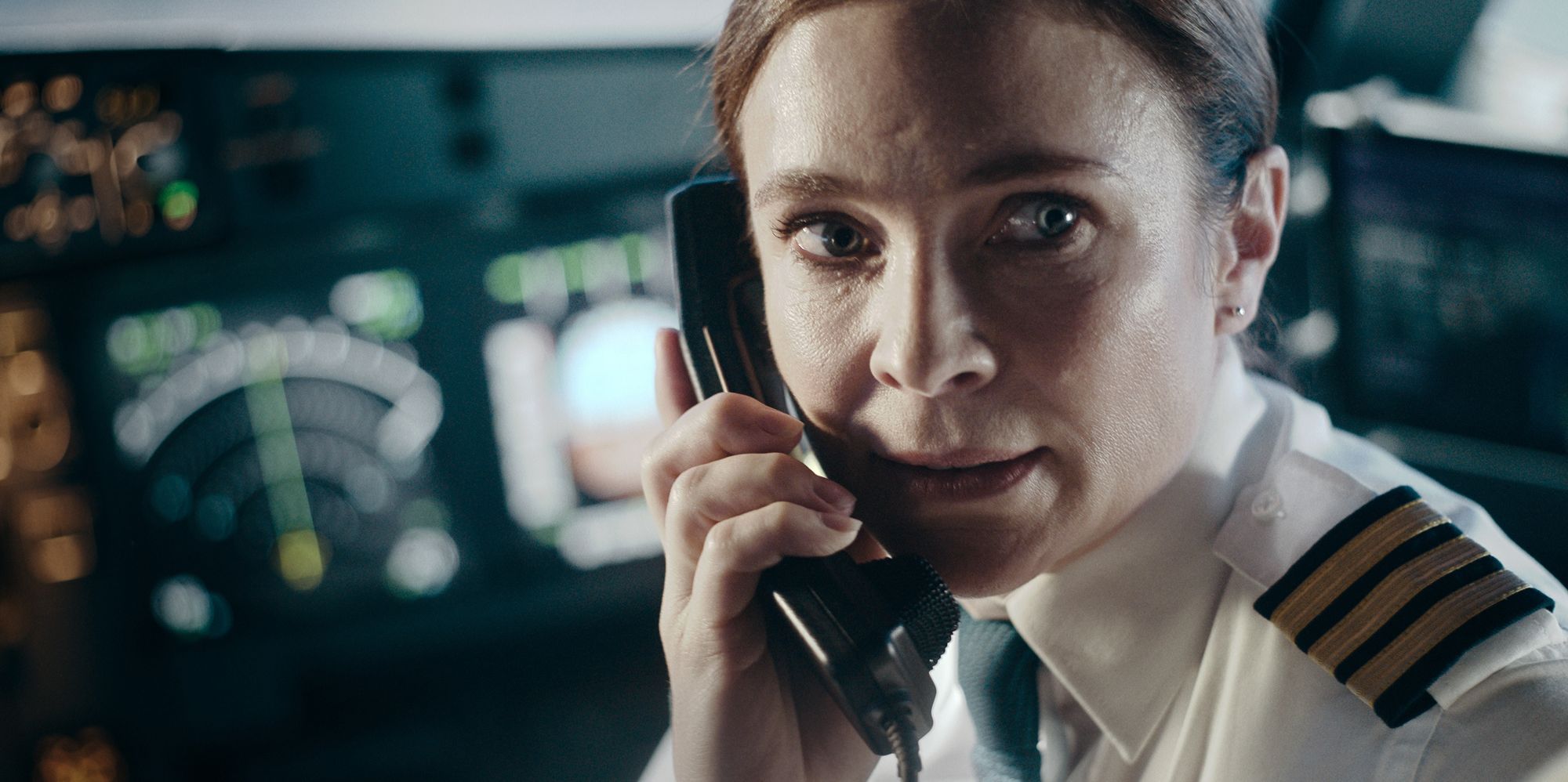
Final Call
Episode 1
In the first episode, we witness the intense boarding and take-off phase of the flight, where numerous observations stand out. Please bear with me through this detailed analysis; the subsequent episodes are comparatively lighter.
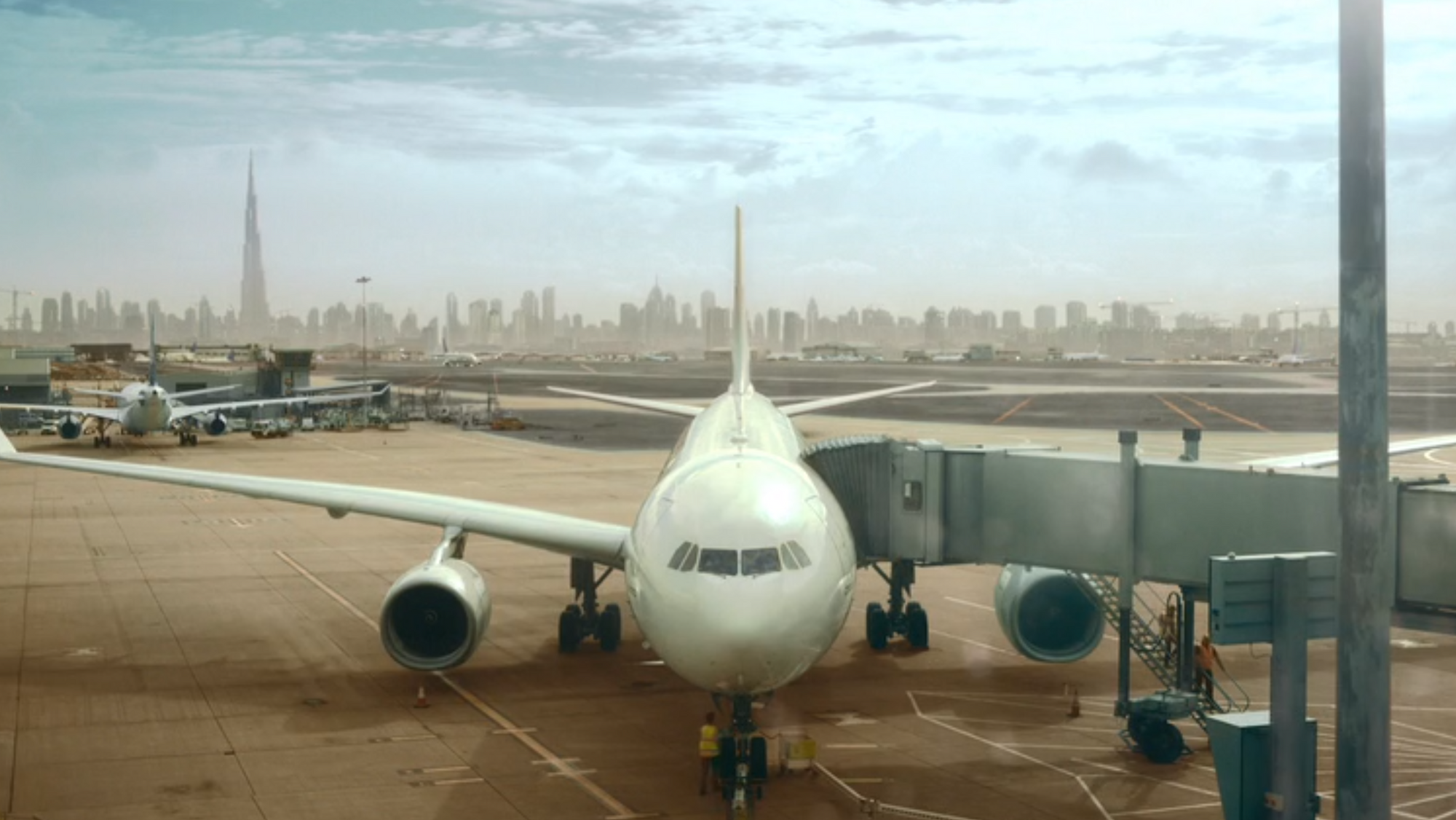
🔺 1. Front View of the Aircraft and Ground Operations (01:40): In this scene, the aircraft is depicted from the front angle. However, it appears too pristine. In reality, at this stage, the aircraft would typically be hastily surrounded by ground handlers, vehicles, auxiliary air conditioning (especially in the sweltering heat of Dubai), and more. The accuracy of this depiction aligns more with the moments just before the pushback phase. The clearance request by the pilot is accurate, though. Following this, there's a sequence of shots showcasing the preparations for completing ground operations, ironically absent in the previous scene. The closing of cargo doors and the removal of the external power unit is premature. Technical staff would not be doing such bolt and body frame checks unless there was a previous issue. Elevator (the control surface at the tail of the plane) checks typically take place after pushback and not at this early juncture.
🔺 2. Radio Communication Number Pronunciation (01:40): In aviation, pilots and air traffic controllers (ATC) often use standard English pronunciation for numbers. However, to enhance clarity in less-than-ideal audio conditions, some numbers are emphasised using specific phonetic pronunciations. For instance, 'three' may become 'tree,' 'five' becomes 'fife,' and 'nine' becomes 'niner.' In the series, 'Kingdom 29' should have been pronounced 'two niner', rather than 'two nine.'
✅ 3. Call Sign (01:40): Call signs serve the crucial purpose of distinguishing stations or participants in communication. As prescribed by the International Civil Aviation Organization (ICAO), aircraft call signs comprise the ICAO-registered airline code and a flight identification number. The flight identification often mirrors the flight number, such as '29,' although some airlines opt for a random alphanumeric identifier like '4DU,' or use both formats. Although 'Kingdom Airlines' in the series is fictional and not officially registered with the ICAO, the use of 'Kingdom' as an airline call sign is sensible. Furthermore, the flight identification '29,' corresponding to the flight number 'KA29,' mirrors the practice followed by airlines based in the United Kingdom.
🔺 3. Call Sign Suffix (01:40): Since the Airbus A330 aircraft is operating above a certain weight threshold, specifically the Maximum Take-Off Weight (MTOW) above 300,000 pounds (136,000 kg), the call sign should include the suffix 'Heavy,' which is notably absent in the series.
🔺 4. Air Traffic Control (ATC) Clearance (01:40): An ATC clearance plays a pivotal role in ensuring the safety of air traffic, preventing collisions between aircraft, and maintaining an organised flow of operations, including ground movements like taxiing. The initial clearance that pilots receive is the flight plan clearance, and the pilot's request in 'Hijack' accurately aligns with standard procedures. 'Dubai Delivery' indeed serves as the correct ATC station responsible for flight plan clearances at Dubai International Airport (DXB).
However, a critical discrepancy arises in the ATC's response, as it fails to provide the essential elements of a comprehensive flight plan clearance. Typically, this clearance should encompass explicit details such as the destination (London Heathrow), designated runway, Standard Instrument Departure (SID) route (e.g., 'DESDI 8D'), initial altitude, anticipated frequency upon departure, and the transponder code to be set in the aircraft's transponder (XPDR). The transponder aids in aircraft identification on radar systems.
Regrettably, the ATC's response in the series merely states, 'you are next after a Gulf Air flight on runway 30,' which is utterly insufficient. Flight preparations are highly dynamic, and committing to a sequence before the aircraft is ready to move is premature. Such instructions are typically provided ad-hoc during aircraft movements where they can be followed immediately. Finally, there is no runway 30 at DXB, it is either 30R or 30L.
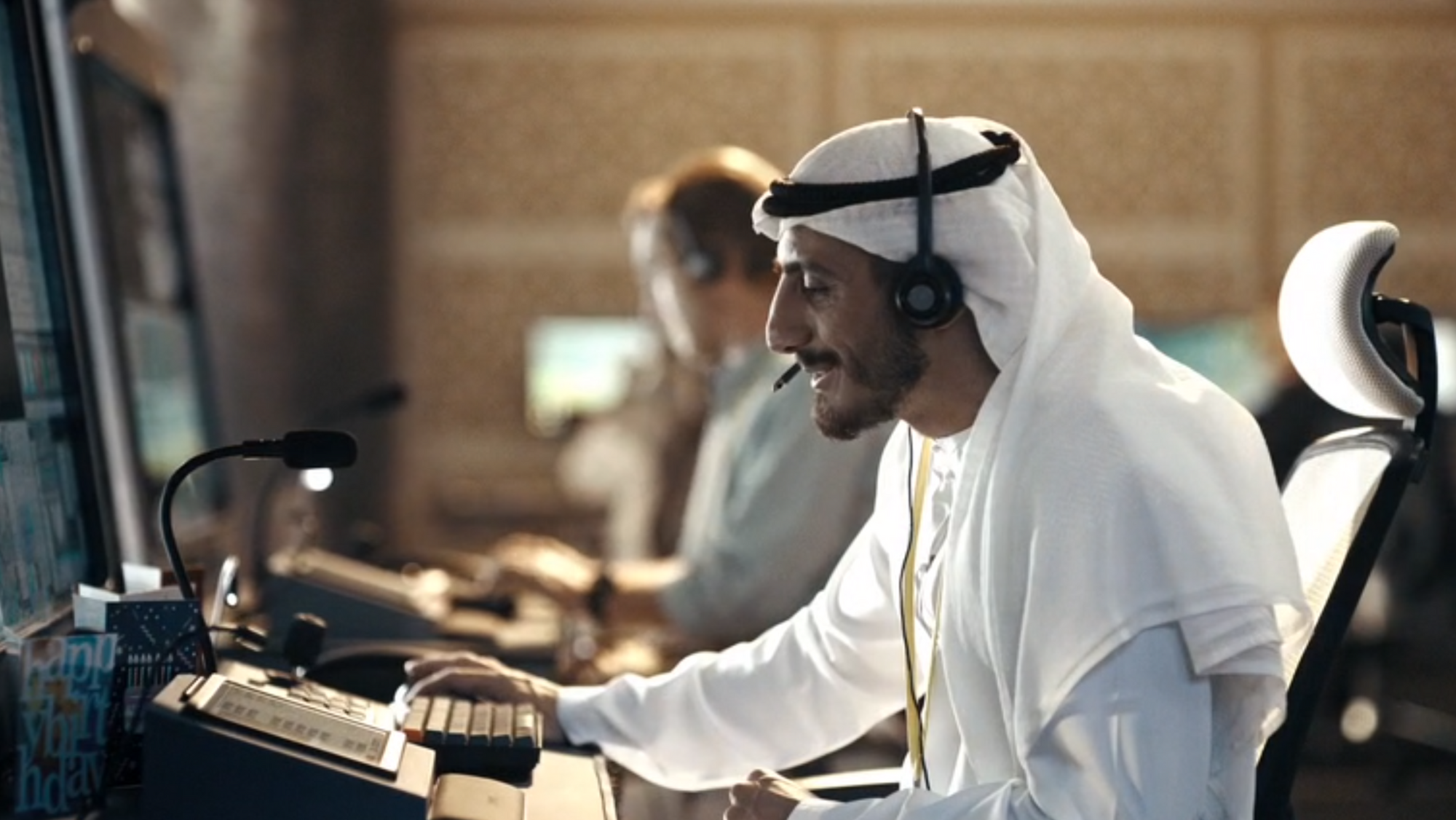
🔺 5. Smalltalk on Frequency (01:40): Radio etiquette includes greeting the ATC station upon the initial call and expressing gratitude or bidding farewell before switching frequencies. In the case of the series, there's a noticeable absence of the customary greeting from the pilot. However, the subsequent exchange about the controller Abdullah's birthday following the clearance response is notably flawed and would be implausible in the real-world, especially considering that Dubai International Airport ranks among the world's busiest airports.
🔺 6. Captain's Public Announcement (02:49): In my assessment, the timing of the announcement appears premature, as some passengers are still in the process of clearing airport security, and many others are boarding the aircraft. Nevertheless, the content of the announcement accurately portrays a captain who does not hate his job and finds satisfaction in making these announcements. The captain's emphasis on certain parts of the announcement is well-chosen. However, it's worth noting that the cruise altitude information was omitted. I find it somewhat puzzling what purpose this information has for the passengers but as I understand, it can contribute to passengers' confidence in the flight crew's competence and alleviate anxiety. Moreover, considering the stage of flight preparations, declaring that the aircraft will be pushing back 'any minute now' appears to be overly optimistic.
🔺 7. Cockpit from A320 (02:49): The depiction of the interior, and seating arrangement of the aircraft in 'Hijack' faithfully reflects the design and layout of an Airbus A330. However, the cockpit depicted in the series is from the smaller brother, the A320. It's common in film and television production to use sets rather than real aircrafts. It's unclear why they chose an A320 cockpit in their 164-foot film set.
🔺 8. Boarding of Sam and the Businessman (04:21): While the specific boarding gate procedures at DXB can vary across terminals, the standard boarding process typically involves scanning the boarding pass to indicate a passenger as boarded. Alternatively, in the event of system issues, the wider part of the boarding pass might be collected, and the passenger's name cross-checked on a printed passenger list. Strikingly, these crucial steps are omitted in the depicted scene, replaced instead by the seemingly irrelevant query about 'no hand luggage.'
Moreover, despite the prior announcement of the 'last call,' the gate agents appear composed, discussing a gift for Sam's wife one moment, and then dramatically denying boarding to the businessman the next. In reality, an unrelated passenger would rarely influence the gate agent's decision. However, it's evident that this scene is strategically designed to highlight Sam's adept people skills.
✅ 9. Businessman's Luggage (04:22): The businessman's revelation that his luggage is already on board is a clever move, as it can be quite advantageous in such situations. When a passenger's luggage is loaded onto an aircraft, but they are not flying, it necessitates the removal of their bags. This process can result in substantial delays, as ground handlers must search through the cargo hold, inspecting all luggage tags until all items belonging to that passenger are located and removed. Allowing the passenger to board in this scenario can significantly expedite the process.
✅ 10. Family's Cabin Luggage (04:44): The anxiety surrounding finding enough cabin space for luggage is a common concern, although it's worth noting that wide-body aircraft typically offer more storage per passenger than in narrow-body aircraft, making this less of a practical issue. It's unrealistic to expect that such a small item would need to be relocated all the way to first class on this aircraft. Furthermore, the portrayal of parents disinfecting tray tables, armrests, and screens is an accurate representation. The blue luggage is popular with families as they can be ridden on.
🔺 11. Second Captain's Public Announcement (05:37): The need for a second announcement, despite the initial assurance that the aircraft would push back imminently, underscores that the first announcement was indeed prematurely delivered. Nevertheless, no significant developments occurred to warrant this subsequent announcement. In reality, such a second announcement is typically made only when a previously mentioned issue or problem has been resolved, serving as an update to passengers.
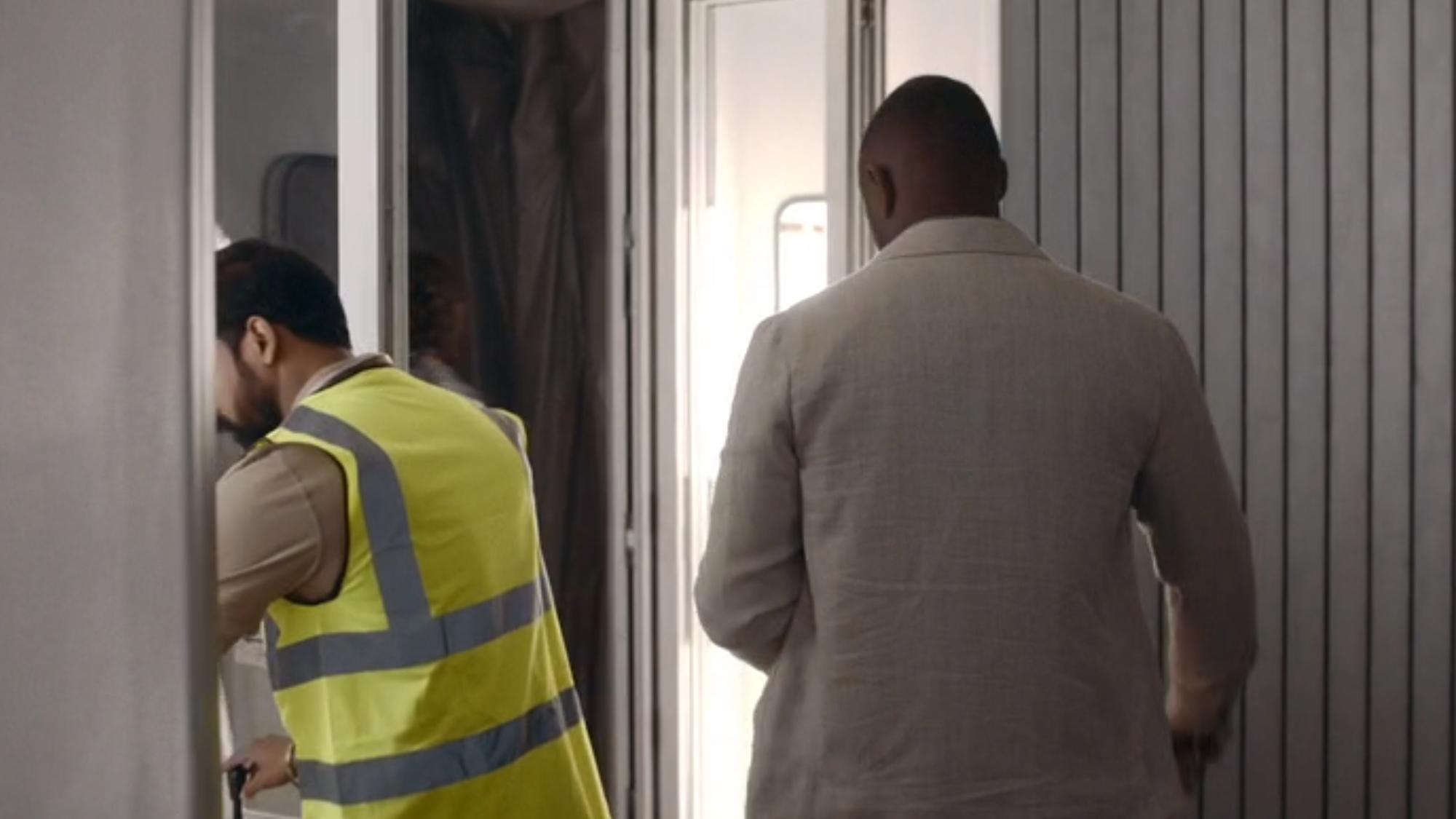
🔺 12. Closing of the Door (05:45): At this point, the jet bridge operator has their hand on the control stick, ready to move the bridge, which is premature. The aircraft door is still open, and passengers are in the process of embarking. After Sam, the attendant immediately closes the door. Typically, an agent would arrive to signal the completion of boarding and gather signatures from the pilots. Only after the agent has departed would the doors be closed, and the jet bridge removed. In the episode, the latter happens two minutes after the door is closed, the operator would not wait this long, nor have their hands rest on the control stick this long.
🔺 13. Attendants Roster Chat (06:02): It's highly improbable for flight attendants who are friends to be scheduled on the same flight, given the vast number of cabin crew members and the typically random allocation of schedules. Rosters, as their schedules are known, are subject to frequent changes, so even close friends may not be aware of each other's flight assignments unless specifically disclosed. Typically, flight and cabin crews convene at the crew terminal at least an hour before the flight, allowing ample opportunity for any casual conversation or discussion. In fact, since this is an airline based in the UK, they would have flown out to Dubai in the outbound flight. Therefore, this depiction of a seemingly casual question amidst a workload-heavy situation is inaccurate. If the airline has a bidding or request process to get a certain route on a certain day it is possible for crews to be on the same flight, yet I doubt this is possible for last minute rotas so the 'weren't you supposed to be on a transatlantic flight' comment is inaccurate.
🔺 14. Priest's Bribing Attempt (06:24): It's a common scenario for attendants to request passengers to return to their seats. Attempting an upgrade at this stage leans towards is unusual. Moreover, the inclusion of a bribery attempt adds extra implausibility to the situation. It's possible that this scene was introduced to establish the persona of a fraudulent priest character.
🔺 15. Valuable Item in the Overhead Compartment (06:54): No one in their right mind would leave such a valuable item there. A flight attendant would have reminded the passenger to keep it close for safekeeping instead of asking about recipient.
🔺 16. Departure Clearance (07:34): First, there is an inconsistency as the flight is now said to be cleared to depart from runway 30R, which contradicts the previous ATC conversation that mentioned runway 30. Second, the issuance of a departure clearance at this stage is incorrect; it should have been a pushback clearance. Third, small talk is again implausible. Fourth, that air traffic controller assumed the 'Dubai Delivery' station. Pushback clearances are given by 'Dubai Ground' or in case of take-off clearances, 'Dubai Tower'. These are separate frequencies with other people assigned to it. Finally, the controller's screen is showing flight progress strips for runway 12R indicating the runway in use is 12R, not 30R.
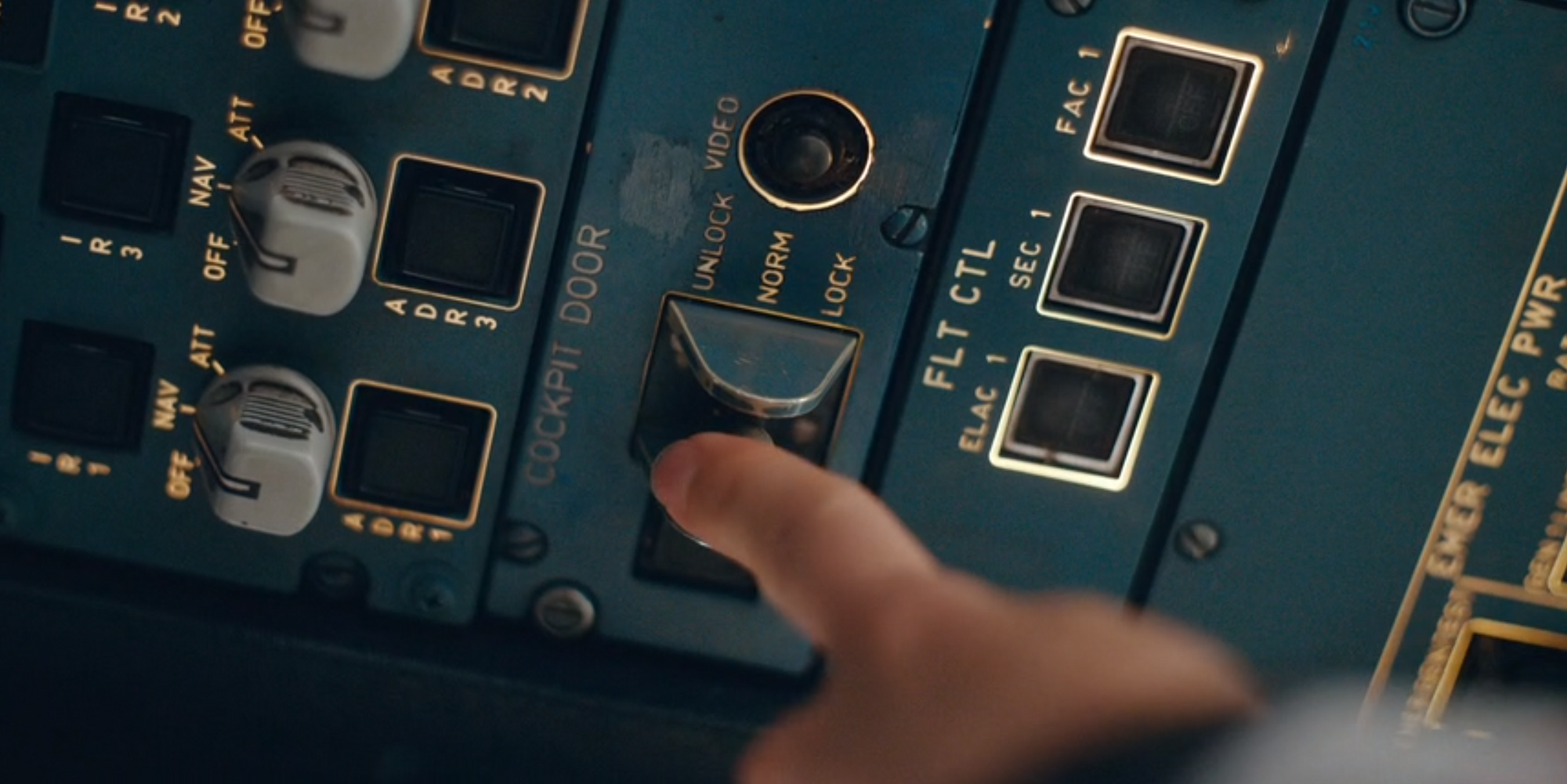
🔺 17. Cockpit Door Locking (07:50): In this scene, the first officer, Anna, is depicted operating the cockpit door panel located in the overhead panel. She selects 'Lock' to convey to the viewer that the cockpit door has been secured, a detail that becomes significant later in this episode. However, it's important to note that the cockpit door is always locked when the door is closed. The door panel typically features a momentary rocker switch with three positions: 'Unlock' to open the door, 'NORM' to indicate that the door is locked (a neutral position to which the switch returns after operation), and 'Lock,' which I'll explain shortly.
Under normal circumstances, access to the cockpit is gained by pressing the '#' button on the keypad located outside the cockpit door. Some airlines may require a code before '#'. This action triggers an audible warning inside the cockpit, and the pilots can unlock the door by selecting and maintaining 'Unlock' until the door is opened. If they do not respond, the door remains locked. In cases where cabin crew cannot communicate with the cockpit, there is an emergency procedure in place to access the cockpit and check on the pilots in case they are incapacitated. This procedure involves entering an emergency access code into the keypad. However, it's essential to clarify that this code does not immediately grant access to the cockpit, as it could be exploited by potential hijackers. Instead, it initiates a timer (between 15 and 120 seconds) inside the cockpit during which the pilots receive continuous audible warnings and must react by selecting 'Lock' to maintain the door's security. If they fail to do so, the door will unlock for 5 seconds. This feature is designed to assist in situations where the pilots are unconscious but would not assist hijackers. Pilots can also manually select this option to disable the emergency procedure for the next 5 to 20 minutes.
Furthermore, the cockpit door panel is typically located in the pedestal between the pilots' seats. However, airlines have the option to request its placement in the overhead panel. It's worth noting that the overhead panel position shown is typically occupied by the APU Fire Control Panel, a common configuration in the current engine option model, which appears to be the type of aircraft featured in this series.
🔺 18. Safety and Emergency Briefing (08:06): On wide-body aircraft with a modern interior like the one depicted here, safety and emergency briefings are typically delivered via video presentations on the screens, rather than being demonstrated in person by the cabin crew.
🔺 19. Seats for Take-off (09:05): The pilot's instruction to the cabin crew to take seats before take-off is typically made just a minute or two before the aircraft aligns itself on the runway for departure. In this scenario, this call occurs immediately after the safety and emergency briefing. At an airport like DXB, this suggests either the briefing was delivered too late or the directive to take seats was issued early.

🔺 20. Take-off (09:37): Several elements were omitted in the lead-up to the takeoff procedure, such as the crucial 'take-off clearance,' which would have been a more precise term than the previous 'departure clearance.' Once the aircraft is aligned on the runway, the throttle is advanced to a specific position to achieve a designated Engine Pressure Ratio (EPR). Following this, the lever is shifted forward to either the 'Flex Temp' (FLEX) or 'Take-off/Go Around' (TOGA) thrust detent. The scene in question commences with the lever being incrementally moved to the TOGA detent, suggesting that the EPR adjustment might have been applied accurately just before. Given the environmental conditions in Dubai, characterised by high ambient temperatures and humidity, and considering that the aircraft is at full capacity, opting for full thrust (TOGA) is a plausible choice.
However, there are some discrepancies during this phase of the scene. The 'Stabilise' callout is somewhat unusual; a more typical call would be 'TOGA SET.' Additionally, there should be a callout of '80' when the aircraft reaches 80 knots during the takeoff roll, which was notably missing. The 'V1' callout, while technically correct, may be automated in the A330, obviating the need for the first officer to manually announce it. This callout signifies that the aircraft has reached the calculated V1 speed, beyond which an abort should no longer be attempted in case of emergencies like an engine fire.
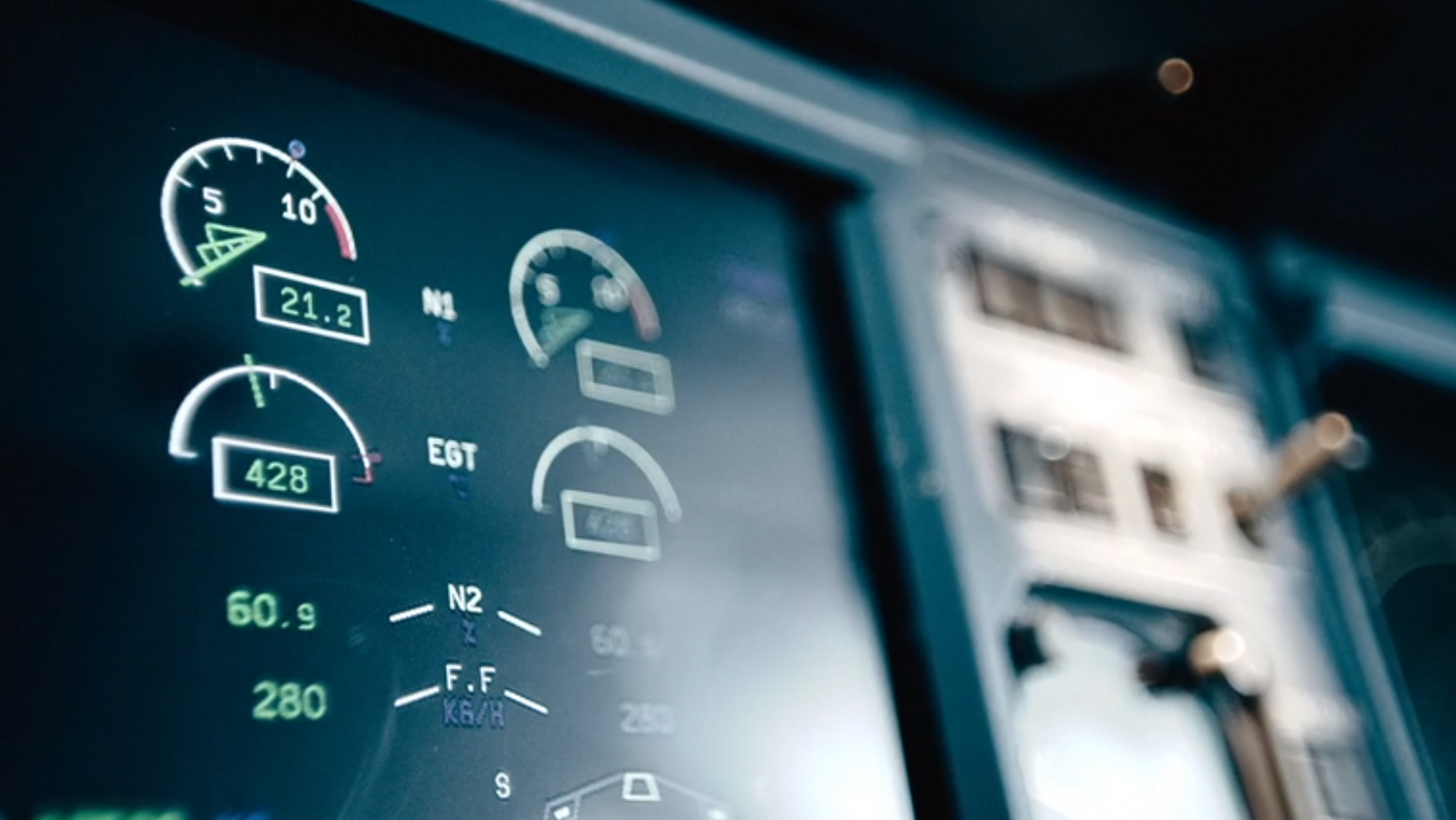
Furthermore, a scene displays a close-up of the Electronic Centralised Aircraft Monitoring (ECAM) display, showing 'N1' and 'N2,' which represent engine rotational speeds. However, at the time of this display, V1 had already been achieved, typically occurring at full thrust, whereas the display indicates almost idle thrust.
✅ 21. Outside Landscape (09:42): As the aircraft undergoes the takeoff run, a window view of the Dubai skyline and airport terminals is shown, later zooming out to reveal Sam. The perspective suggests a left-hand seat, which aligns with accuracy. The exterior view of the aircraft, as shown from the outside, maintains accuracy.
🔺 22. Seat Belt Sign Signalling (11:53): While I lack first-hand experience in this, my research indicates that seat belt signs can be used to signal cabin crew for both non-priority and priority messages, although the specific protocols may vary between airlines. However, it seems unlikely that two chimes would signify 'get us coffee'; it's more probable that it's a signal to 'contact us (we might request coffee).' Both the use of a code for caffeine and the chime conversation would likely be perceived as cringe joke in the cockpit.
🔺 23. Security Incident Declaration (28:44): First, the Captain initiates a transmission to Dubai, and unsurprisingly, he lands with the same air traffic controller. In reality, though, this transmission would typically be directed to 'Emirates Control,' an entirely separate unit. The statement 'Kingdom 29, you can't keep away' is inaccurate, as pilots typically remain with that controller until instructed to switch frequencies.
Second, while it's understandable that some pilots might overlook this in high-stress situations, an emergency declaration should adhere to a specific format, which is not followed in this instance. The appropriate format would be 'Mayday Mayday Mayday, Emirates Control, Kingdom 29, security incident onboard....'
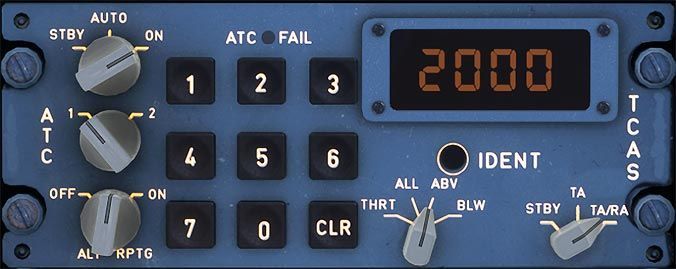
🔺 24. Transponder code (28:44): In a previous point (#4), I explained the practice of using a transponder code, also known as a squawk code, which serves to identify an aircraft on secondary surveillance radar (SSR). In the case of an emergency, there are three specific transponder codes designated for different situations, aimed at effectively signalling your condition to air traffic control. These codes are '7700' for distress or urgency, '7600' for loss of two-way radio communication, and '7500' for unlawful interference, which includes hijacking. Changing the transponder code is a discreet action and takes only a few seconds to complete. The fact that the flight crew fails to execute this critical step has been one of the most widely criticised aspects of the series by aviation enthusiasts, a sentiment with which I concur.
🔺 25. Colette Calling the Cockpit (30:09): If the perpetrators managed to place Colette on this flight intentionally, it suggests a compromise within the Kingdom Airlines dispatch department.
When Colette calls the flight deck, the call is answered by the first officer, Anna. In reality, in a threatening situation like this, it would typically be the captain who handles the call. Neil, the hijacker leader, requests to speak with the 'pilot', which is understandable, but it's worth noting that both individuals in the cockpit are pilots, so he should have specifically requested to speak with the captain.
Neil instructs Colette to mention that every trip to Dubai is magical, implying that this is how they spend time together. It's important to clarify that no airline schedules flight crew members to be on the same flight simply because it's headed to a particular destination. While a bidding process might explain their presence on the same flight, it would indeed be unusual for them to consistently select Dubai, a location where adultery is a serious crime. One might expect them to choose destinations like the Maldives or the Caribbean instead. This is unless this was simply meant to indicate their affair.

🔺 26. Headphones (34:54): Firstly, the headphones worn by the pilots in the series are labeled 'Capt' and 'F/O' for captain and first officer. This appears inaccurate, as both pilots use identical headphones, and labelling them individually is not practical for the airline. Pilots typically use either their own personal headphones or those provided by the airline. Some airlines may require flight crews to pick up and return headphones at a counter in the crew terminal, a measure aimed at ensuring hygiene and durability, as a specialised team can inspect and maintain them after each use.
Secondly, the quality of the headphones depicted in the series appears to be lower than what one would expect from a major airline. These headphones are uncomfortable to wear and of subpar audio quality. Given that this series is an Apple Original production, it's notable that the Apple brand is visibly featured on various devices. It's possible that a competing headphones brand, popular among pilots, was not showcased due to competition with Apple's Dr. Bre.
Lastly, it's important to mention that Airbus cockpits are typically quiet environments. Above a certain altitude, pilots often remove their headsets and rely on loudspeakers and handheld microphones for communication.
✅ 27. Fight in the Cockpit (34:54): First officer Anne observes Captain Robin glancing at the control panel, and when Robin makes a move to unlock the cockpit door, Anne attempts to physically intervene.
First officers are not generally permitted to disobey the captain's instructions or orders in the cockpit. The hierarchy in the cockpit is clear, with the captain being the pilot-in-command (PIC) and having ultimate authority and responsibility for the safety and operation of the aircraft. First officers are there to support the captain and assist in flying the aircraft, but their role is subordinate to the captain's authority.
However, aviation safety is built on a culture of communication and collaboration in the cockpit. First officers are encouraged to respectfully voice their concerns or suggestions if they believe there is a safety issue or if they think the captain is making an error. This is part of the concept of "Crew Resource Management" (CRM), which emphasises effective teamwork and communication among flight crew members.
Airlines maintain stringent protocols in the event of a hijacking, with most policies absolutely forbidding the opening of the cockpit door under such circumstances. Given that the captain's decision to open the door is influenced by a personal connection with a flight attendant, Anne's intervention is entirely comprehensible, as it involves the potential risk to numerous lives on board and on the ground. While the portrayal of Anne's actions seem plausible to me, the opposite depiction of a subordinate first officer would have also been plausible.
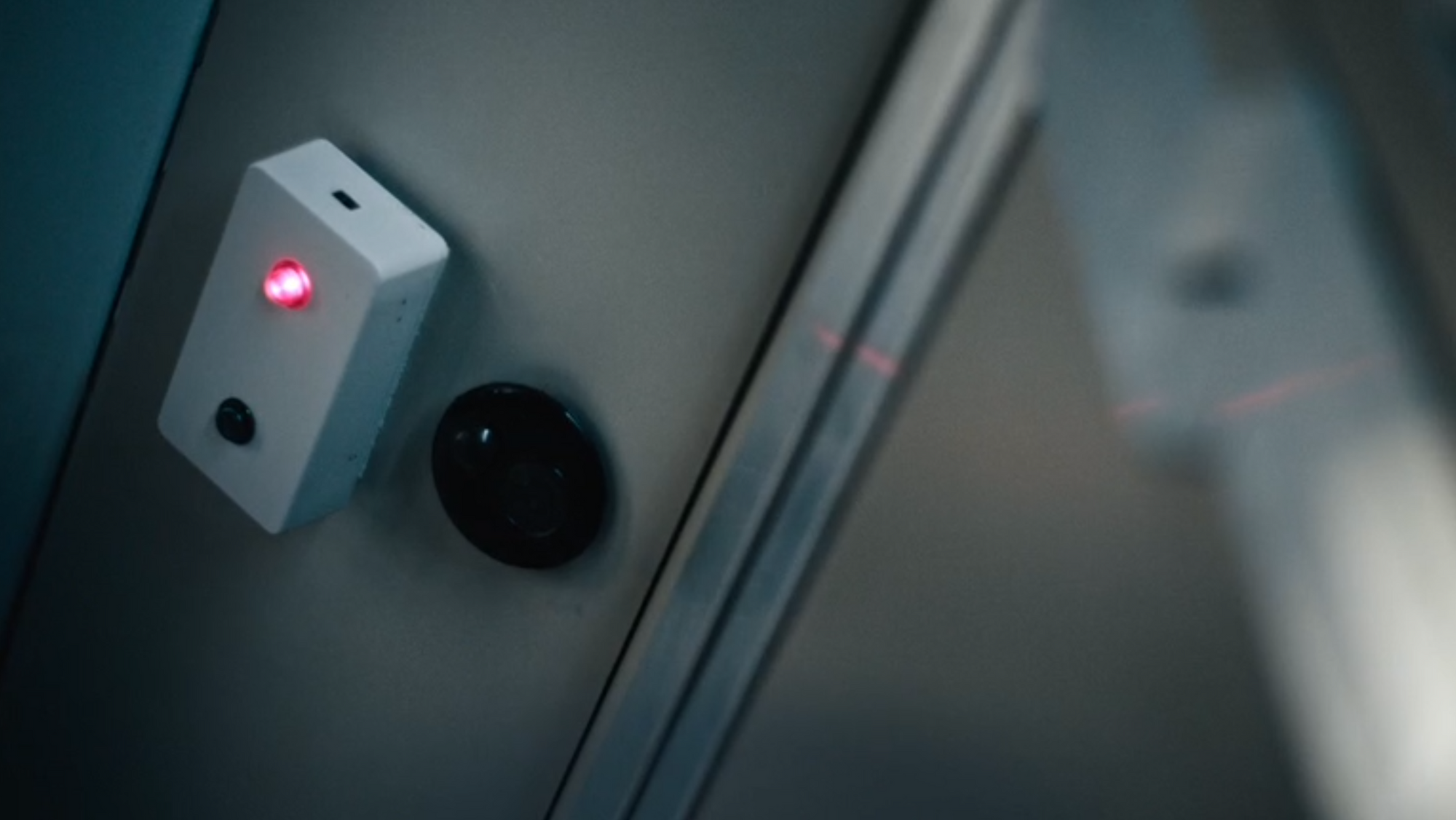
🔺 28. Cockpit Door Lock Indicator (35:42): The portrayal of the bulky white door lock indicator in the series is notably inaccurate. It is discernibly out of place, appearing unlike its surroundings and giving the impression of being a low-quality addition. In reality, the genuine indicator is situated on the keypad and functions differently. It typically illuminates in green when the Cockpit Door switch is held in the 'Unlock' position and red when the 'Lock' position is selected. It appears that for dramatic purposes, the series opted for a different design for this indicator.
Additionally, it's important to clarify that the cockpit door does not simply 'pop open' when the switch is operated. The switch is designed to unlock the door, not unlatch it.

🔺 29. Radar (36:07): In the radar shot, two pieces of information are presented: the flight number and the aircraft registration.
First, the aircraft registration is depicted as G-KNDM, cleverly hinting at Kingdom Airlines, which is also printed on the aircraft's tail. While this could be seen as a playful pun, it might inadvertently suggest that Kingdom Airlines operates only one aircraft, or that this particular aircraft holds a unique position within their fleet. The 'G' in the registration stands for Great Britain, indicating its place of registration.
Second, it's worth noting that neither of these pieces of information would be relevant or feasible for an air traffic controller. An accurate depiction of secondary surveillance radar (SSR) typically includes essential data such as the transponder code, call sign, speed, and altitude.
🔺 30. Calling Off Distress (36:10): Declaring an unlawful interference is a grave matter and not easily rescinded. Air traffic control and law enforcement agencies in the Emirates and the destination, the United Kingdom (UK), would have already been alerted, along with nearby ATC units like those in Bahrain and Qatar.
It is plausible for a situation to de-escalate, such as when the perpetrators are subdued. However, even in such cases, protocols would still demand an expedited diversion back to Dubai or a nearby airport. This is done to facilitate the apprehension of the individuals involved, conduct thorough security checks on the aircraft, its cargo, passengers, and their belongings, and ensure that competent authorities handle the entire affair.
The captain's request to the air traffic controller not to notify London would indeed raise a serious red flag.
Given the initial distress call and subsequent uncertainties, it's likely that the United Arab Emirates or Bahrain would have scrambled fighter jets to intercept the aircraft, gaining visual contact and gathering additional information from the pilots.
The depiction of a crowd gathering around the air traffic controller is accurate, but typically, officials of higher authority would engage with the controller in such situations rather than just gawking. When the controller acknowledges the call-off, you see them walking straight back to business as usual rather than engaging in a discussion about the situation.
🔺 31. Handover to Bahrain (37:07): The process of being handed over to another airspace follows a highly scripted ATC phraseology. The phrase 'you are now leaving the airspace' is not an accurate representation. Instead, the controller would instruct, 'Kingdom 2-9, contact Bahrain Control on 122.50,' often followed by a brief 'bye-bye' or 'safe journey,' to which the pilot would respond with 'Contacting 122.50, thank you, Kingdom 2-9.'
However, the handover process doesn't conclude there. The pilot is required to promptly establish contact with Bahrain Control before entering their airspace. This typically involves a communication like 'Bahrain Control, good day, Kingdom 2-9, flight level 310, inbound ITMUB.' In response, Bahrain Control would acknowledge, 'Kingdom 2-9, Bahrain Control, good day, radar contact.'
✅ 32. Bahrain or Doha FIR (37:07): The airspace region between the Emirates and Bahrain's Flight Information Region (FIR) is occupied by Doha FIR. Ideally, the flight should have been handed over to Doha FIR.
However, it's worth noting that Doha FIR was officially established on September 8, 2023. Given that the production of 'Hijack' was already underway at that point, the portrayal of Bahrain FIR was accurate according to the timeline of the series' creation.

🔺 33. Turning off the Wi-Fi (37:11): In this scene, Captain Robin is instructed by Neil to disable the Wi-Fi. Robin temporarily diverts Neil's attention by mentioning that 'this is a 300, I usually fly the 200s.' However, it's important to note that both Airbus A330-200 and A330-300 have identical cockpits. The control of the 'passenger internet wireless connection' typically falls under the responsibility of the Flight Attendant Panel (FAP) rather than the cockpit. It's worth mentioning that I could not find the switch that Robin pushed. It appears to be positioned above the Emergency Locator Transmitter (ELT) where there are blank panels where the placement of such additional panels can vary by airline's discretion. Additionally, after disabling connectivity, it may take up to 4 minutes for the Wi-Fi to fully deactivate, so it would not occur as immediately as depicted in the scene.

3 Degrees
Episode 2

🔺 34. Front Galley (01:52): The front galley shown doesn't match an Airbus 330 setup. There's no jump seat on the right side of the door, a space typically used for galley equipment. The phone to contact the cockpit is also in the wrong place and looks like a normal phone attached. An accurate setting might have compromised the dramatic start of the second episode though.
🔺 35. Solitaire (14:24): Air traffic controllers (ATCs) do have access to games and consoles, but these are typically in their resting areas, not at their workstation while giving take-off clearances. At one of the world's busiest airports, active ATCs often don't have a moment to check their phones, let alone play games. Workstations in such environments are tightly controlled by centralised systems, preventing controllers from installing games like Solitaire even if they wished to.
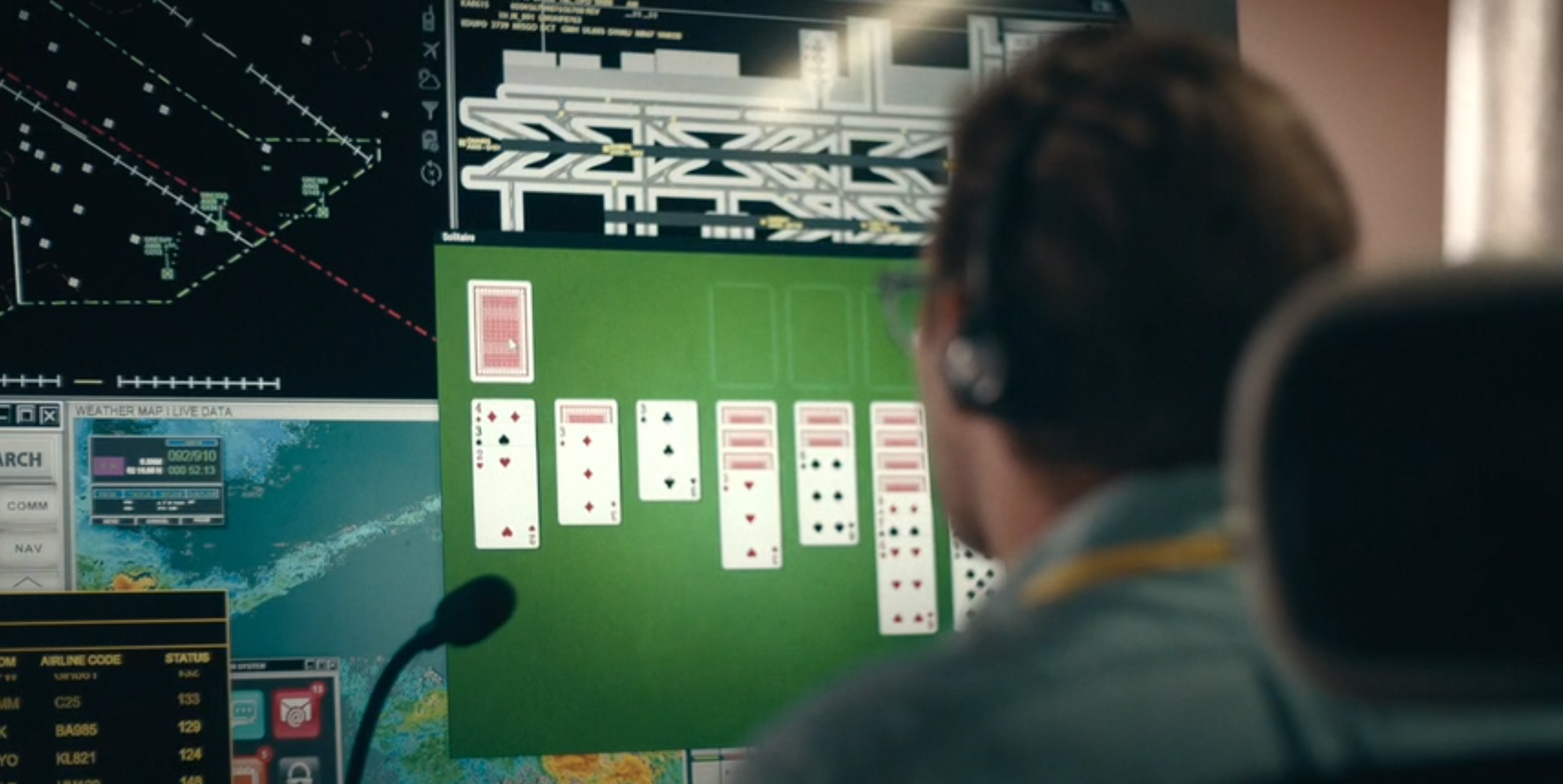
🔺 36. Advanced Surface Movement Guidance and Control System (A-SMGCS) (14:24): Above the Solitaire window, there's an additional screen displaying the airport layout. This is probably the A-SMGCS which is typically used to enhance controllers' situational awareness and proactively alert them about issues like runway incursions. On this screen, there are crossed squares (similar to the secondary surveillance radar screen I discussed in #28). In an A-SMGCS, you'd see aircraft icons indicating their positions and directions. If these squares represent aircraft, it raises concerns. Both runways appear to have multiple aircraft on them simultaneously. While it's possible for aircraft to line up while another is decelerating, those on the left seem too advanced, especially in warm, humid places like Dubai, where aircraft usually use the entire runway length for takeoff, not from an intersection. If you want to see this screen in action at Dubai Airport, check out the background in Sam Chui's video.
🔺 37. Take-off clearance (14:33): In this scene, the pilot of BA9850 is requesting clearance for take-off. Firstly, 'BA' is the International Air Trade Association (IATA) designator for British Airways. However, in air traffic services, the International Civil Aviation Organization (ICAO) call sign is used, which for British Airways is 'Speedbird'. Secondly, pilots should never use the term 'take-off' in communication except when the controller issues the take-off clearance, the pilot reads it back, or in emergencies like 'reject take-off'. Instead, pilots state that they are ready for 'departure'. Additionally, pilots usually provide their location information when contacting a new frequency. The pilot should have said 'Speedbird 9850, at holding point M13A, runway 30R, ready for departure'.
Furthermore, a Dubai-London Heathrow service is significant for British Airways, so they would typically use a shorter flight number. Longer flight numbers are usually assigned to domestic, seasonal, or code-sharing flights. In the case of code-sharing flights, the call sign of the operating airline would be used.
Meanwhile, the unnamed controller, is seen playing Solitaire, chatting with Abdullah, wishing him a Happy Birthday, and only then issuing the take-off clearance. It's unrealistic for a controller to issue clearance while multitasking; there are several checks to be done, including runway availability. Moreover, a proper take-off clearance should include additional information such as the current wind direction and velocity, as well as the frequency to contact after departure.
🔺 38. Leaving Stations (15:14): The theme of leaving stations is prevalent in this TV show, with instances like airport security agent Neela rushing home and Abdullah announcing his departure. While Abdullah's departure might be due to the end of his duty time, the other controller should not leave the station without proper handover. Leaving a station requires briefing the incoming colleague about active clearances and other crucial information for a seamless transition.
🔺 39. Walking into the Terminal (15:18): Firstly, considering that Abdullah and the other controller are issuing take-off clearances, they should be located in the ATC tower. Controllers need a direct view of the airfield to maintain situational awareness, and it's common for them to stand while working. However, control area and approach controllers don't necessarily require visibility. The workplace depicted in the show seems more suitable for area and approach controllers. For an accurate portrayal of the ATC tower atmosphere, please refer to Sam Chui's video.
Secondly, it's essential to note that the ATC tower is not physically connected to the terminal building, and there wouldn't be direct access to the terminal area. Having a single unprotected door leading into the terminal would raise security concerns.

✅ 40. Autopilot (17:04): The depiction accurately shows that when the autopilot is engaged, the AP1 button illuminates, and 'AP1' is displayed on the Primary Flight Display (PFD). The pilot then points at the Multi-Function Control and Display Unit (MCDU) where the destination airport 'EGLL' is indicated at the bottom left. 'EGLL' is the ICAO designator for London Heathrow, with 'E' representing Northern Europe, 'G' representing the United Kingdom, and the last two letters being assigned by the Civil Aviation Authority (CAA). However, the statement that pilots do not have to touch anything until an hour to London is incorrect.
🔺 41. Inflight Game Chat (21:00): Sam contacts the pilot seated in 1K through a game on the inflight entertainment system. While multiplayer games exist, it's highly unlikely to include instant messaging due to potential misuse, making it an unnecessary risk for airlines.
🔺 42. Airport Security Footage (25:29): The United Arab Emirates, like many other countries, takes airport security seriously. First, air traffic controllers have no authority to demand or view CCTV footage. Abdullah could raise awareness but would unlikely access the footage. Secondly, the likelihood of an air traffic controller having a personal connection with an airport security agent, to the extent of attending birthday parties, is extremely implausible. Dubai's airport employs thousands. Social circles in Dubai are often stratified by income, impacting educational choices, making it unlikely for individuals from different roles to share the same social sphere. Third, the X-ray scanner belt typically operates only when the control stick is used. Neela's disappearance would have halted the belt, and her departure should have triggered luggage rescanning. Fourth, the agent's assumption about Neela's shift ending is inaccurate; shifts are replaced as a whole crew, with operations paused during transitions.
✅ 43. Entering Iraqi Airspace (29:11): The aircraft has entered Iraqi airspace without prior clearance, triggering Baghdad FIR's attempt to contact the pilots. While unresponsive aircraft are not uncommon due to communication failure or pilot misconfiguration, there are notable inaccuracies. Before entering a new airspace, the previous air traffic control unit should request a frequency change, which pilots must acknowledge. Failure to do so would initiate an uncertainty phase. Baghdad uses a different frequency, making direct contact improbable unless the pilots had pre-set it. Pilots are also advised to monitor the emergency frequency 121.5 MHz for distress situations. Baghdad's attempts may be on that frequency. The controller later instructs switching to the Baghdad frequency.
🔺 44. Identification (32:46): The idea of identification through the frequency is unconventional and not part of standard procedures. While there might be protocols for unlawful interference that I am not aware of, Baghdad's current lack of information and the short duration of the unresponsiveness makes this situation highly improbable. In aviation communication, there is no distinction between the captain and first officer when talking to air traffic control, so the controller's insistence on speaking specifically to the captain is implausible. Furthermore, it's unlikely that personal information about the flight crew would be readily accessible, especially displayed on the radar screen. The controller does correctly ask for position information, but instead of requesting the destination, they should be inquiring about the aircraft's next waypoint and estimated time of arrival at that point.

🔺 45. Heading Change (36:43): While sitting up from his seat, the captain adjusts the heading by three degrees, which gives the episode its title. The control inputs he makes on the Flight Control Unit (FCU) are accurate. Initially, he rotates the knob to synchronise the selected heading indicator with the current heading, then adjusts it to the desired heading. Finally, he pulls the heading knob to switch the autopilot from using the stored value in the flight plan (managed mode) to the selected value (selected heading mode).
This change serves as a silent indication that something is wrong with the flight. In #23, we discussed the standard practice of selecting '7500' as a transponder code for unlawful interference and hijacking, which the flight crew omits in this case.
The heading alteration is their first attempt to send a hidden message. In managed mode, the autopilot adheres to a flight plan, which includes turns to follow the route. While three degrees might seem minor, over time, the deviation would increase. Considering potential turns, the aircraft might miss those and continue on the selected heading. This deviation wouldn't be as discreet as intended since it could be noticed on a map, potentially leading to the aircraft entering unauthorised airspaces, like Azerbaijani airspace, prompting hijackers to question the route, asking, 'Why are we in Azerbaijan?'
If they chose not to squawk 7500, a better option would have been to adjust the altitude to be 300 feet higher than selected. This way, the route is still followed, and there's no danger to other aircraft since there's sufficient vertical separation (flight level clearances have a maximum deviation of 300 ft). Given the aircraft's current cruise altitude and if no step climbs are planned – which the pilot would be aware of – there's a low risk regarding obstacle clearance. This strategy is recommended in questions banks for airline transport pilots exams.
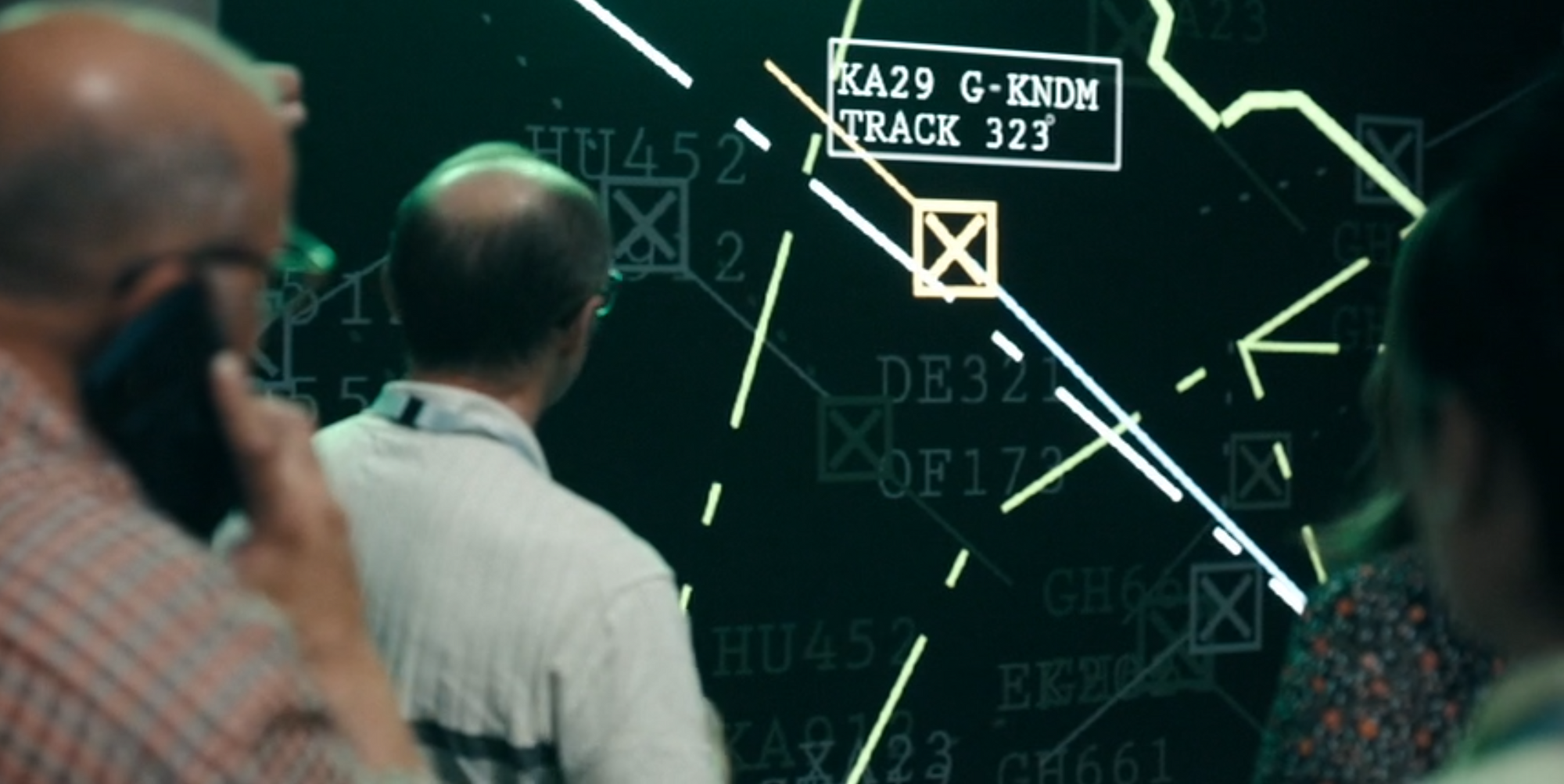
🔺 46. British ATC Getting to Work (37:17): When someone is late, they would typically miss a specific shift and wouldn't to start to work without proper coordination. Air traffic controllers operate in rotating shifts, often lasting an hour, to maintain a balance between active duty and rest periods. Due to Alice's delay, someone else would have to cover her shift, potentially sacrificing their rest time. The repeated lateness depicted suggests a serious issue that would likely have caused significant tension among colleagues. Controllers usually work in specific stations responsible for designated areas such as runways or arrival sectors. The oversimplification of air traffic control procedures is a recurring theme in the TV series. The conversation about someone covering her Swiss Air shift is inaccurate. Additionally, when she plugs in her headphones, there would be no audio until she selects a specific station. Furthermore, a flight delay is a common occurrence and wouldn't typically be a noteworthy topic of conversation.
🔺 47. Calling Baghdad (39:36): UK air traffic control is contacting Baghdad to inquire about the flight. Firstly, at one point, the UK supervisor saying 'OK, you need to share your screen now' is peculiar and suggests an air of British arrogance. There's currently no technology allowing such seamless screen sharing. As you're likely aware from your own experience, even sharing a screen in a video meeting can be inconvenient, let alone transmitting data from one locked-down air traffic unit to another in a different country. I highly doubt it works in such a straightforward manner.
Secondly, the supervisor asks if that is the standard route, which, in reality, is not a correct question. The appropriate inquiry should be whether the aircraft is following the filed route.
Thirdly, Alice points at another line displaying the expected path of the aircraft, indicating a deviation from the airway. The way she communicates this seems disrespectful to her colleagues, implying they don't know how to read the radar.
Fourthly, one of the controllers asks if the deviation could be due to bad weather, to which the team responds it's too straight of a line. The problem here is that any route change must be approved by ATC regardless. Weather-related adjustments might still result in a straight line if made early and the weather system has not yet been reached to revert to the previous course.

Draw a Blank
Episode 3
🔺 48. Istanbul Control (07:43): Alice's suggestion to contact Istanbul for further clarification on the pilots' change of route demonstrates a rare moment of coordination between air traffic control authorities. However, a more accurate approach would have been to contact Ankara FIR instead of Istanbul FIR. Since the aircraft was entering Turkish airspace from the southeast, Ankara FIR would have jurisdiction over the situation.
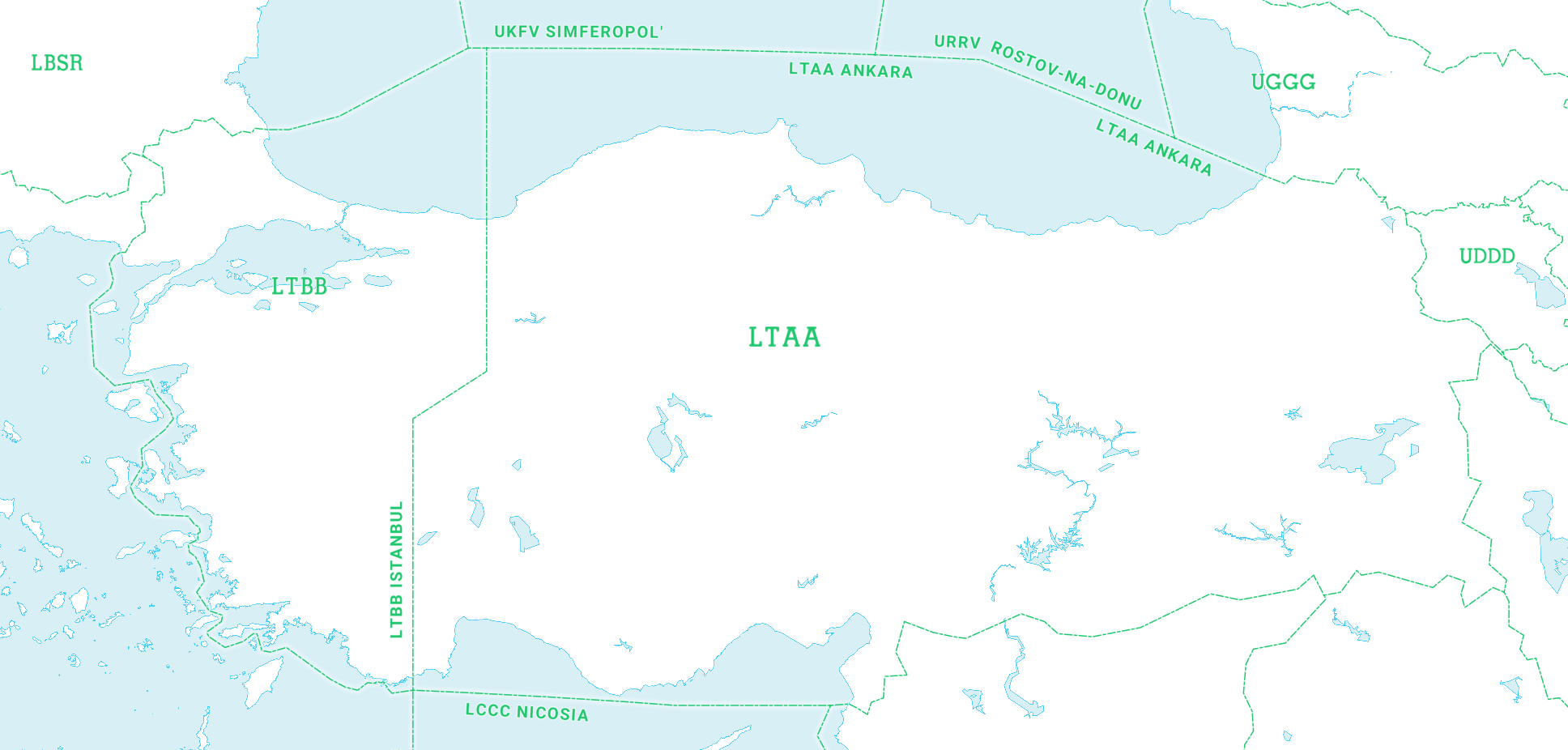
Furthermore, repeatedly calling the frequency to inquire about the course deviation, especially if unlawful interference is suspected, seems unusual. This contradicts the notion of conveying a silent message through the course deviation.
✅ 49. Course Deviation (13:53): Neil, the leader of the hijackers, instructs the captain to respond to the calls from Istanbul Control. As expected, the controller inquires about the course deviation.
The exact timing of the captain's course selection is unclear, but if we assume it occurred 10 minutes in, given a cruising speed of 470 knots, the aircraft would have traveled approximately 80 nautical miles (nm) by then. The distance between Basra and the Turkish border is about 460nm. Considering a track error of 3º over 380nm results in a distance off track of 19nm. Therefore, a 12-mile deviation is within the realm of accuracy.
🔺 50. Course Correction (13:53): The captain turns the selected heading knob to the left to intercept the original course. The aerial depiction of the plane has too much bank for such a heading change. However, the problem is that the aircraft cannot be left on this heading, it would just pass through the planned course to its left which we will see about 9 minutes later.
Finally, there is no airway 2. Airways have longer designators such as M860.
🔺 51. ATC Cutting off the Captain (14:06): The way radios operate is that whoever presses the Push to Talk (PTT) button, or in other words, keys the microphone first and keeps it pressed, no one else can transmit on the frequency. Therefore, it is inaccurate for Istanbul Control to interrupt the captain while he continues to speak.
As a side note, a stuck PTT button is a genuine problem that renders the entire frequency unusable. Since the controller cannot instruct anyone to switch to another frequency, other aircraft may not be aware of the issue or how to respond. Most transmitters have a timeout functionality that stops transmitting if the button is kept pressed for a certain duration; for example, in Garmin radios, this timeout is set to 35 seconds.
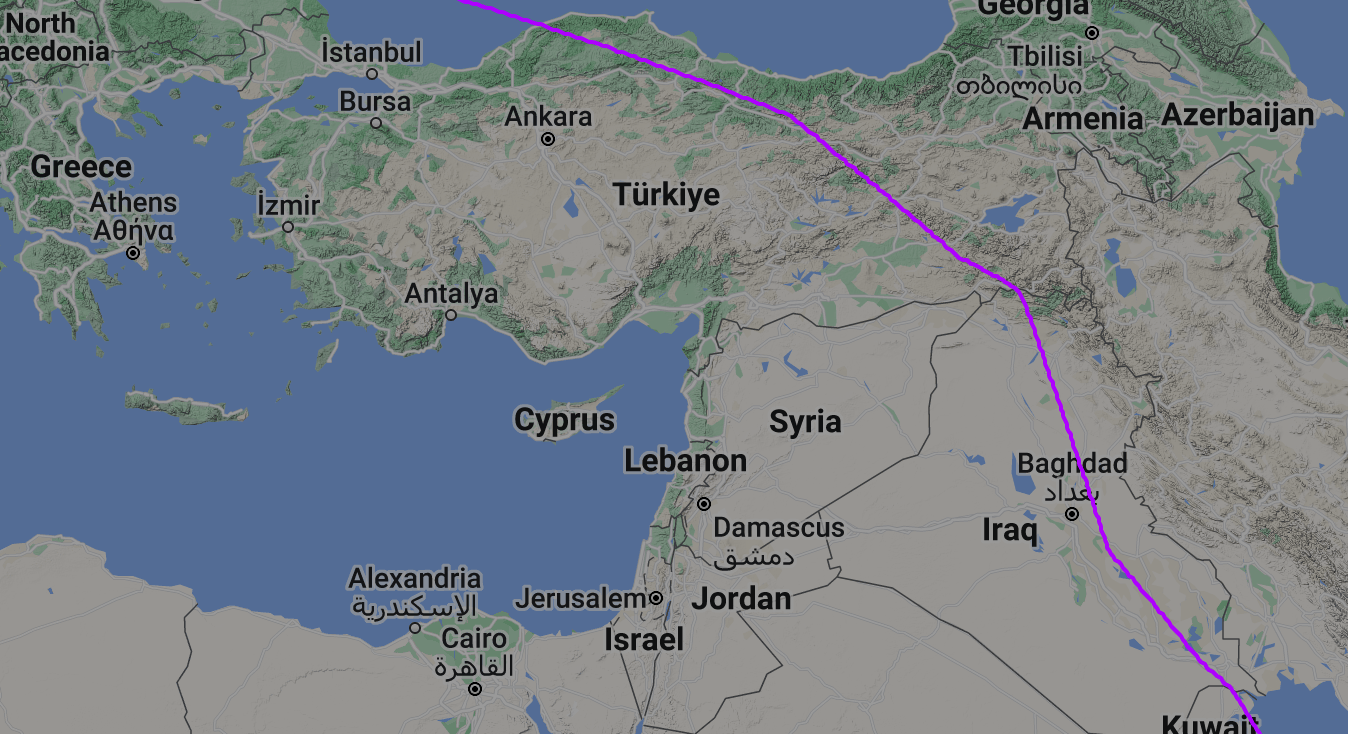
🔺 52. Syrian Airspace (20:13): Traditionally, the route from London to Dubai would pass over Syria. However, due to the ongoing conflict in Syria, airlines opt to circumvent Syrian airspace by traversing Iraqi airspace before entering Turkish airspace directly. Yet, in this brief scene, both the planned and actual flight route are depicted as crossing Syrian airspace, which contradicts the practice of European airlines.
🔺 53. Turning on the Wi-Fi (33:41): Neil pushes the WiFi button then proceeds to use it to contact his boss. However in reality it takes a long time for the connectivity system to boot up and connect. It is left on when he leaves the cockpit.
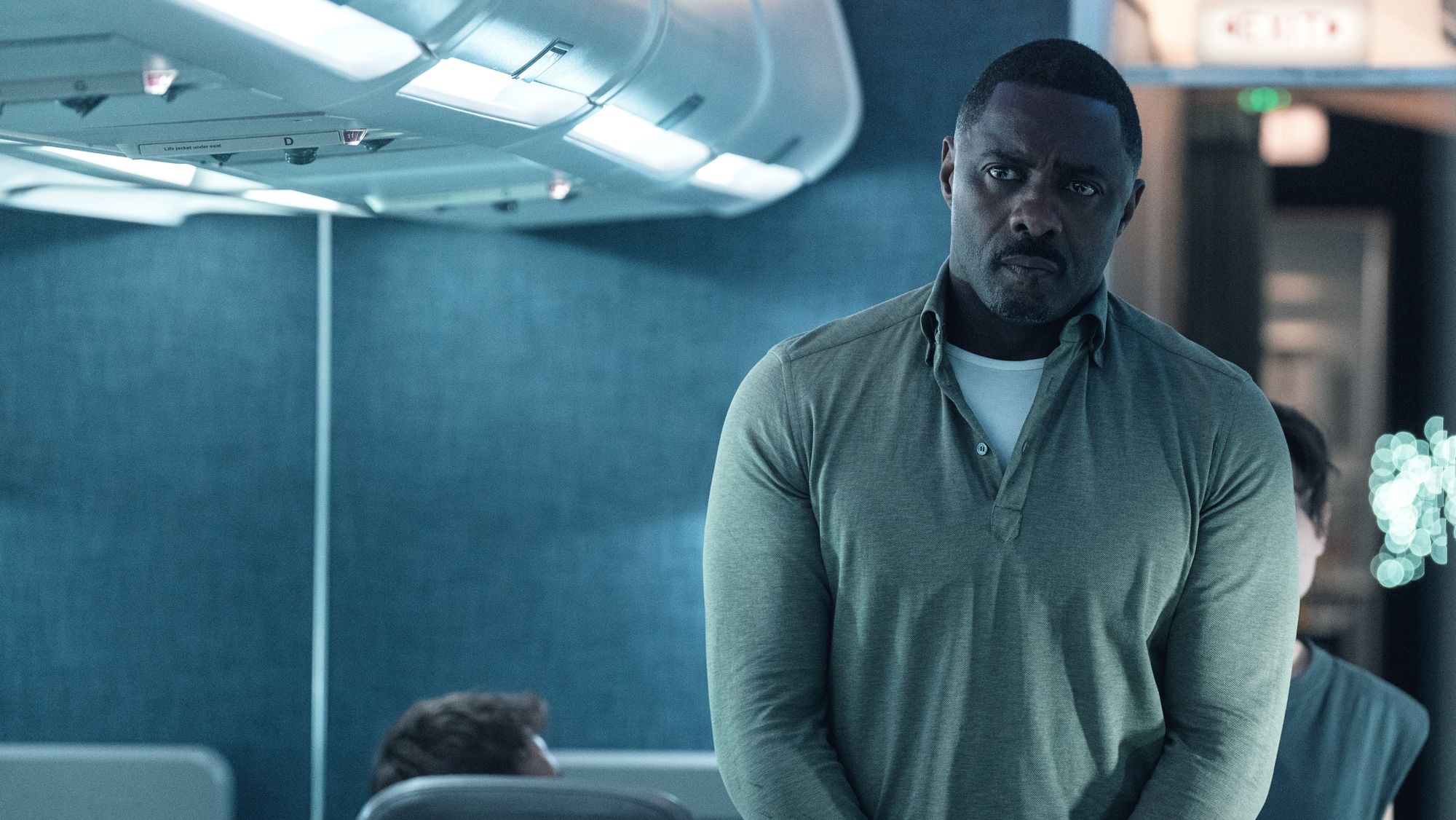
Not Responding
Episode 4
🔺 54. Bulgarian Airspace (06:23): To simplify things the creators of Hijack have decided to simply ignore the Bulgarian airspace and go straight to the Romanian airspace.
✅ 55. Loudspeaker (06:30): While Neil is under stress, he gets angry about the Bucharest controller trying to contact the pilots. He accurately turns down the loudspeaker volume, although it's worth noting that the A330's loudspeaker control is located in a different position compared to the A320. As I outlined in #7, we are in the wrong cockpit.
✅ 56. Call for a Doctor (16:22): The announcement 'If there is a doctor onboard, please make yourself known' happens more often than you might think. This is indeed accurate.

🔺 57. Interception by German Fighter Jets (22:54): In the case of an unresponsive aircraft with a reasonable risk, it's protocol to scramble jets promptly for interception. This enables fighter jet pilots to visually assess the situation, peer into the cockpit, and attempt communication. It's surprising this didn't occur in Turkey or Iraq. In extreme cases, a rogue aircraft might be shot down to prevent further urban casualties.
The depicted fighter is a Eurofighter Typhoon, but the problem lies in its German Air Force (Luftwaffe) logo. Romanian Eurofighters have a different emblem.
✅ 58. Alternative Communication (23:24): The fighter jet broadcasts blindly, that is without receiving a response, instructing the Kingdom 29 aircraft to rock its wings to communicate alternatively in case of a communication failure. This is accurate. It is similar to using hand gestures instead of words. It is not a perfect communication yet enough to not be shot down.
✅ 59. Visual Confirmation (23:24): Closing the window blinds is a clever tactic to prevent signals from passengers being seen by jets. However, this coordinated action should have raised suspicion as there are always passengers who don't close their blinds in a normal flight.
Intercepting jets can see things through the windows, although I'm uncertain about the level of detail received. Nevertheless, any odd behaviour would still be visible. Hence, the visual confirmation of something unusual is likely accurate, although determining if they are armed remains unclear.
🔺 60. Demand to Remove of Jets (30:07): The British Foreign Secretary is pleading with her Romanian counterpart to recall their jets. I find this implausible. The issue isn't the presence of the jets; it's the potential deadly action they might take. The jets are providing valuable intelligence, which you'd want to maintain as long as possible, thus should be maintained.
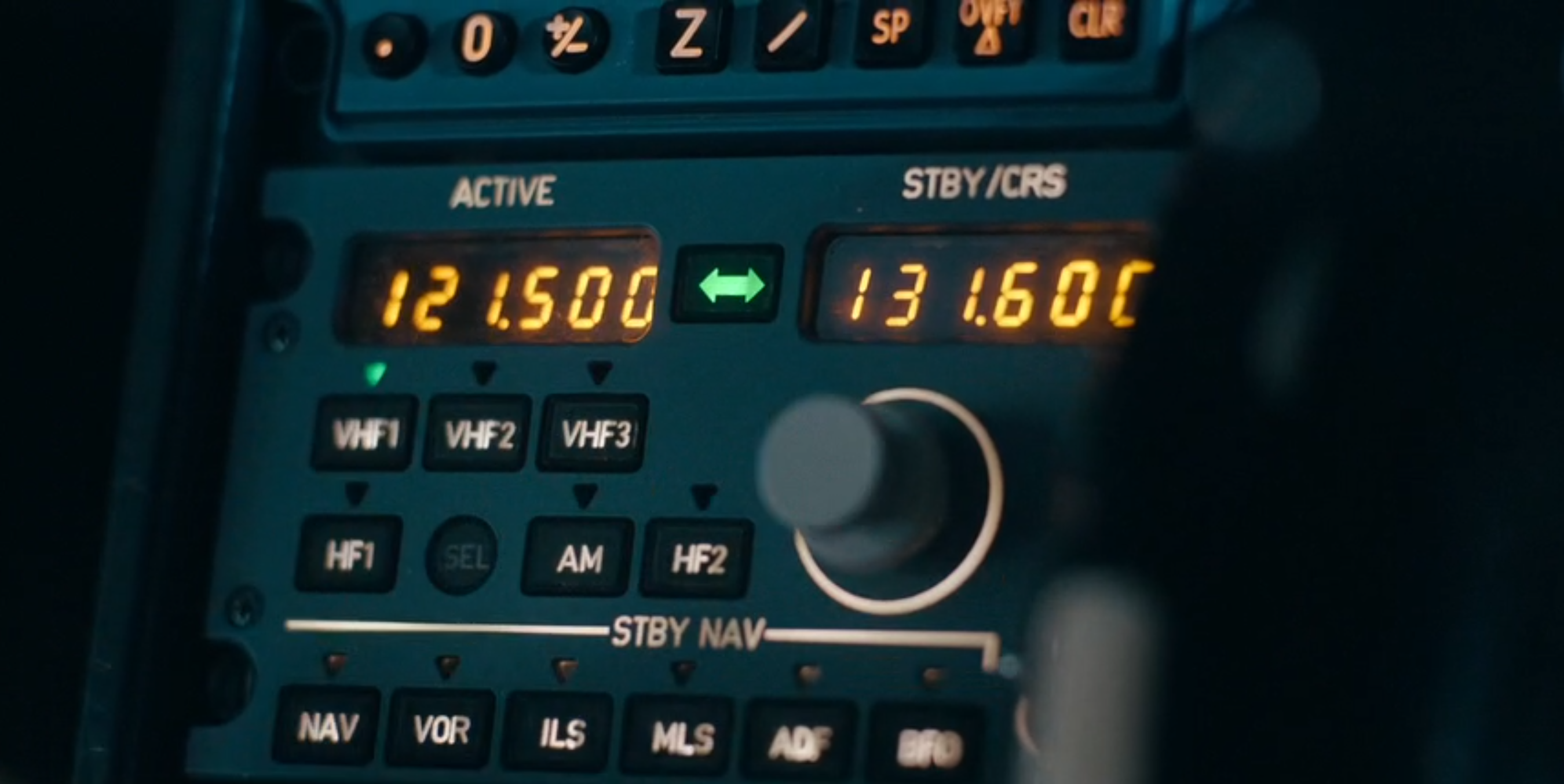
✅ 61. Radio Frequency (30:54): He can be seen to press the transfer key which swaps the active and standby frequencies. The standby frequency was 121.50 MHz, after pressing the transfer key it moved to active frequency. This is accurate.
The frequency 121.50 MHz is reserved for emergencies and interceptions. Interceptors attempt various frequencies to establish contact before settling on 121.50 MHz. Ideally, initial broadcasts should be made on the current frequency in use. However, due to the hijackers preventing the captain from performing his duties, he is unaware of the airspace frequency. Thus, using the emergency frequency in this situation is accurate.
🔺 62. Broken Headset (31:09): The captain notices that his headset no longer works, as Neil had damaged it. The scene is cut, leaving viewers uncertain about whether he resolved the situation. While this could have been a concern, there are alternative communication methods in the cockpit. First, there is the first officer's headset. Second, there is a handheld microphone. Additionally, airlines may carry backups or provide extra headsets for additional occupants, such as examiners, ensuring redundancy in communication equipment.
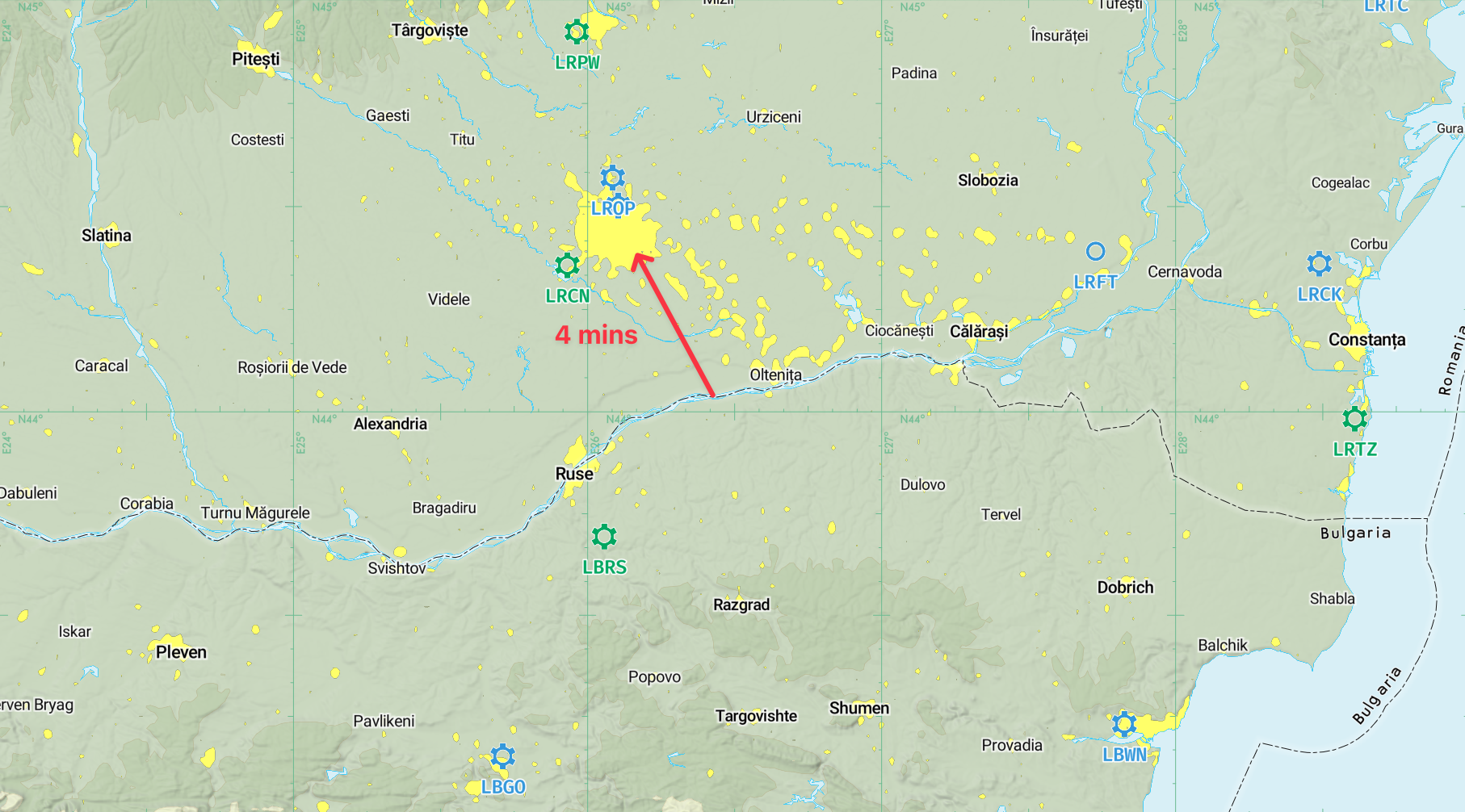
🔺 63. Too Long to Bucharest (30:52): It has been 24 minutes since entering Romanian airspace, and Bucharest is still not passed. In reality, Bucharest is so close to the airspace border that it would only take 4 minutes for the A330 to reach. Given that the Romanian air traffic control unit was aware of the inbound situation, it should have sought assistance from Bulgaria or Turkey to intercept the aircraft before it entered Romanian airspace.
🔺 64. Phone call (34:02): Sam makes a phone call using one of the hijackers' phones. At a cruising altitude of 34,000 ft, there's no chance this phone would receive a cellular signal. I've never managed to get VoIP working on a plane either. Moreover, the hijacker isn't a first-class passenger who might have access to better Wi-Fi service.
🔺 65. Disengage (41:22): The intercepting jets veer off after being commanded to return to base. The signal that the interception is over involves an abrupt break-away manoeuvre, with a climbing turn of 90 degrees away from the aircraft. This is depicted accurately. However, the jets were in a firing position outside the passenger aircraft's sight, so this manoeuvre wouldn't have been noticed in the cockpit. The jets should have first moved forward towards the cockpit.
While the break-away manoeuvre is standard protocol, a sensible military command would have ordered the jets to monitor the situation from a distance afterwards. Going from almost shooting a passenger aircraft to completely disregarding the situation due to a word by a foreign diplomat seems too extreme. This situation was managed more effectively in episode 7, see #89.
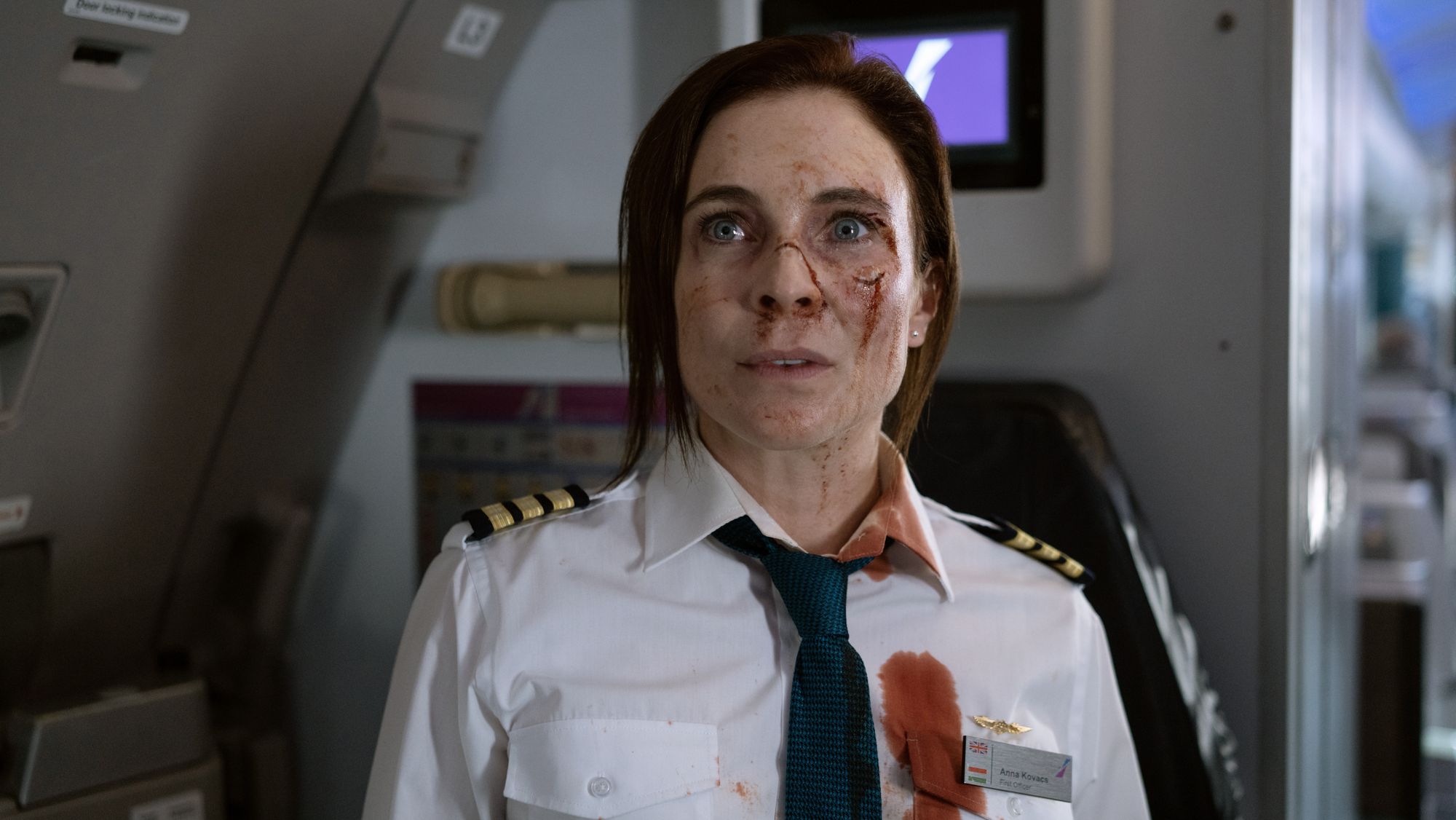
Less Than an Hour
Episode 5
🔺 66. Name Badge (03:13): The depiction of pilots wearing name badges indicating their proficient languages is highly unlikely. In standard flight operations, pilots rarely interact with passengers, and their presence in the cabin is limited. Pilots typically carry formal identification cards attached to a lanyard, spoken languages won't be on that card. The scenario where Sam notices the first officer, Anna, speaks Hungarian from her name badge is implausible and not in line with real aviation practices. However, he might deduce it based on her surname, as it is the second most common surname among Hungarians, carried by over 220,000 people.
✅ 67. Hungarian (18:16): Sam approaches Anna about his plan to communicate with Budapest air traffic control in Hungarian. Anna responds that they speak English and no Hungarian is needed. While air traffic controllers primarily use English, they also provide services in their local language. I have experienced this myself in Turkey and Ukraine. Smaller airports may not see much international traffic, so the controllers may have lower proficiency due to little practice. However, Budapest Control is very proficient. For safety reasons, it is preferred to speak English so that other pilots in the airspace can maintain situational awareness. Pilots can anticipate scenarios affecting their operation, such as an aircraft on final approach bracing for a go-around if they hear the pilot of another aircraft on the runway broadcasting a rejected takeoff. In some cases, pilots and controllers use English for standard phraseology but switch to the local language for specific details. For example, a Turkish Airlines pilot experiencing engine problems may issue a Mayday distress call in English, discuss emergency details in Turkish, then switch back to English for landing instructions. Therefore, I find this scenario plausible.
🔺 68. Wrong Seat (22:54): The idea that a first officer, who had been beaten, was hungry, and scared, would voluntarily choose to sit in the left seat during the most critical phase of a flight is implausible. This is especially true considering that first officers typically spend many years flying from the right seat, designated for them. The only time they might occupy the left seat is if they were assigned as a relief pilot, but this would only be during the cruise phase with no manual flying involved. Unless the hijackers forced her into the left seat, which was not indicated in the show, this scenario lacks credibility.
🔺 69. Distress call (23:05): Similar to point #22, the distress call depicted does not adhere to aviation standards. The appropriate call in this situation should have been: "Mayday Mayday Mayday, Budapest Control, Kingdom 29, [location information,] medical incident on board needing medical assistance, request expedited landing at Györ Airport, ...". Assuming this is the first contact with Budapest Control and frequency change requests have not been complied with, the pilots would not know the frequency to reach Budapest Control. Thus use of the emergency frequency 121.50 MHz is probably reasonable.
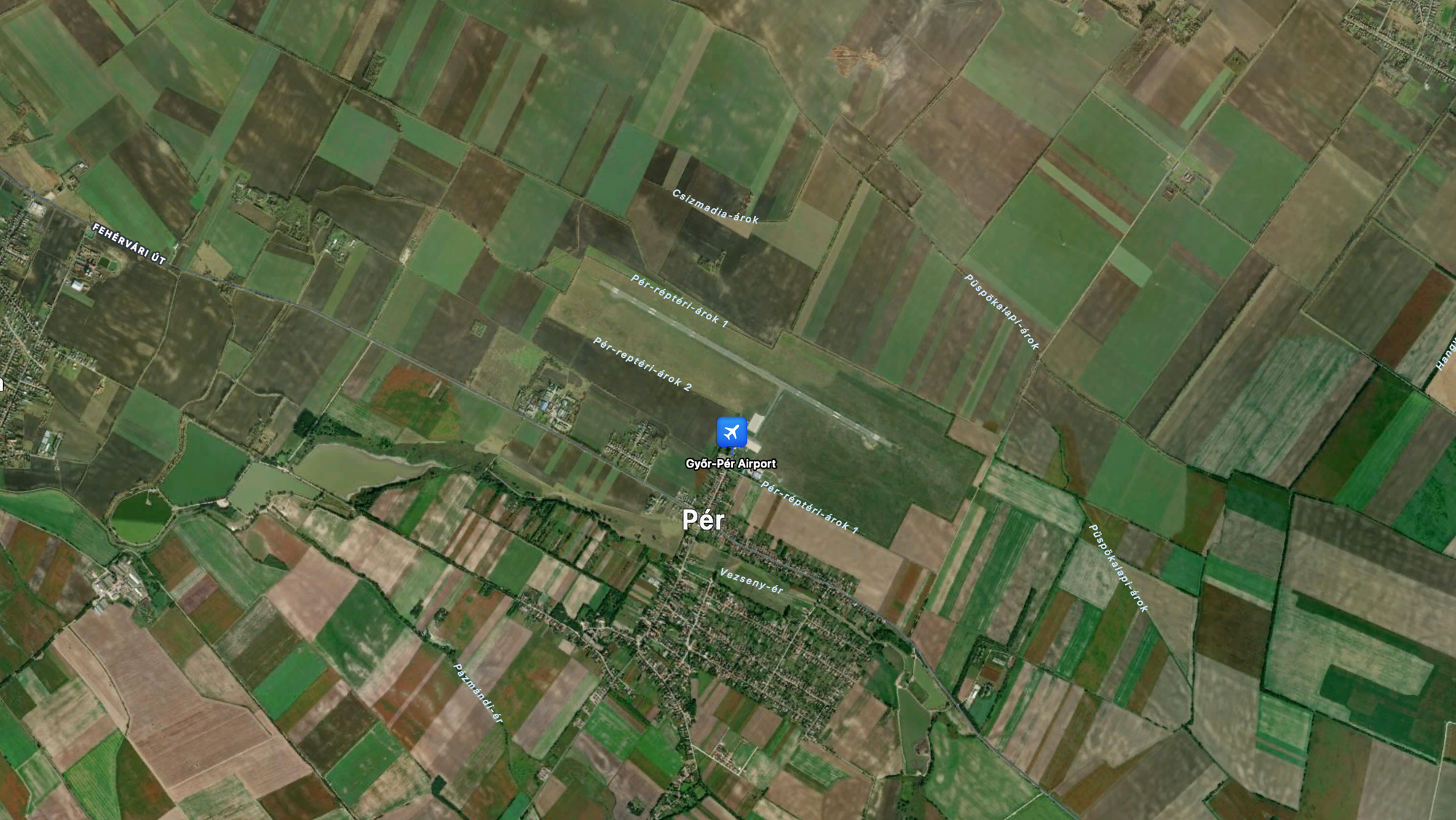
🔺 70. Győr-Pér Airport (23:56): Anna's request for Győr-Pér Airport, located near Budapest and without regular passenger flights, is not suitable for several reasons. Firstly, the runway at Győr-Pér Airport is 2,030 meters long, which is insufficient for the A330. The aircraft requires at least 2,200 to 2,500 meters for take-off, depending on the weight and variant. Secondly, this airport is unlikely to have the necessary equipment, such as stair trucks or relevant fuel, for an aircraft of this size. Thirdly, Budapest International Airport is only a few minutes away by air from Győr-Pér. Requesting medical assistance at Budapest International Airport, with its adequate facilities and proximity, would have been a more practical choice.
🔺 71. Above My Job Level (25:50): The response from the Hungarian air traffic controller, stating that this situation is above her job level, is implausible. In such a critical scenario, the controller's standard procedure would have been to put the aircraft on standby by saying 'standby, Kingdom 29' and promptly request a replacement. Given that this flight was already flagged as a concern, there should have been a team of experienced colleagues and supervisors ready to handle the situation. Thirty seconds later, the controller suddenly becomes confident, urgently requesting armed units and soldiers on the ground. She neither grants permission to land nor suggests Budapest Airport as an alternative though.
🔺 72. Descent (26:37): Anna initiates a descent to prepare for landing. There's a lot involved in setting up an aircraft for descent and landing, especially during an unexpected diversion. Considering the series claims to depict real-time flight, the transition to ground visibility within a few seconds is unrealistic. In reality, this process would take at least 15 minutes. With such a steep descent angle, passengers would have experienced a noticeable descent long before the ground became visible. Additionally, it's improbable that the aircraft would be perfectly aligned with the runway; any turns made during descent would have been noticeable. In one window scene, the altitude appears to be as low as 2,000 feet, a sight passengers would only experience moments before landing, not during the descent phase.
🔺 73. SWAT Team (31:21): In this scene, a tactical police team arrives at the airport. It's evident that the depicted location isn't the real Győr-Pér airport which has green fields around two small concrete aprons.
The team members have 'TEK' written on their backs, indicating the Counter Terrorism Centre, a Hungarian government agency with a tactical unit for responding to terrorist incidents. The police number plates on the cars align with reality.
Nevertheless, the idea that a rapid response team would have a detailed action plan ready as soon as they exit their vehicles is implausible. Considering the aircraft is filled with British and other nations' citizens, a poorly executed response leading to numerous casualties could spark an international scandal for Hungary. Typically, in such situations, the approach is to deescalate the crisis through diplomacy while the police work on response plans. For effective response planning, they would need specific information: the exact location of the aircraft on the apron, the number of hijackers, the types of weapons involved, the passenger count, and more. Facilities would be necessary for security checks on each passenger, accommodating and feeding them, and providing medical care if needed.
The decision by their commander to approach the aircraft with a bus is not ideal. It lacks discretion, and entering through the opposite door, which would likely be closed, further complicates the situation.
🔺 74. ATC Centre (32:16): In this scene, the ATC centre now resembles a situation room. However, the previously unconfident controller is still the one communicating with Anna. A commanding officer of the Hungarian Army arrives – identifiable by her arm patch, but the pivotal decision to grant permission to land is made without her involvement. Surprisingly, the controller asks Anna if she wishes the Hungarians to stop the hijackers, to which she confirms in English. Subsequently, permission to land is granted.
Ordinarily, landing clearance is issued by the airport's tower. Given that Győr-Pér is in proximity to Budapest Airport, the approach would typically be handled by the Budapest Approach station. However, in this portrayal, a single controller manages all aspects, highlighting a recurring issue with the TV series' depiction of air traffic control procedures.
🔺 75. Landing (33:30): In this scene, the Flight Control Unit (FCU) displays selected speed and heading values; however, since there is still a dot to the right, it indicates that the autopilot is in managed mode, following the planned route rather than the selected values. In order for the selected values to be used, the respective knob needs to be pulled. Ideally, Anna should have been securely buckled in, and the seat should be moved forward to the operating position, ensuring safety during the landing attempt.
The SWAT team reports visual contact and engine noise, although this is inaccurately portrayed as the aircraft is still quite far from the runway. Such intense noise levels are usually experienced when the plane is directly over the runway during landing.
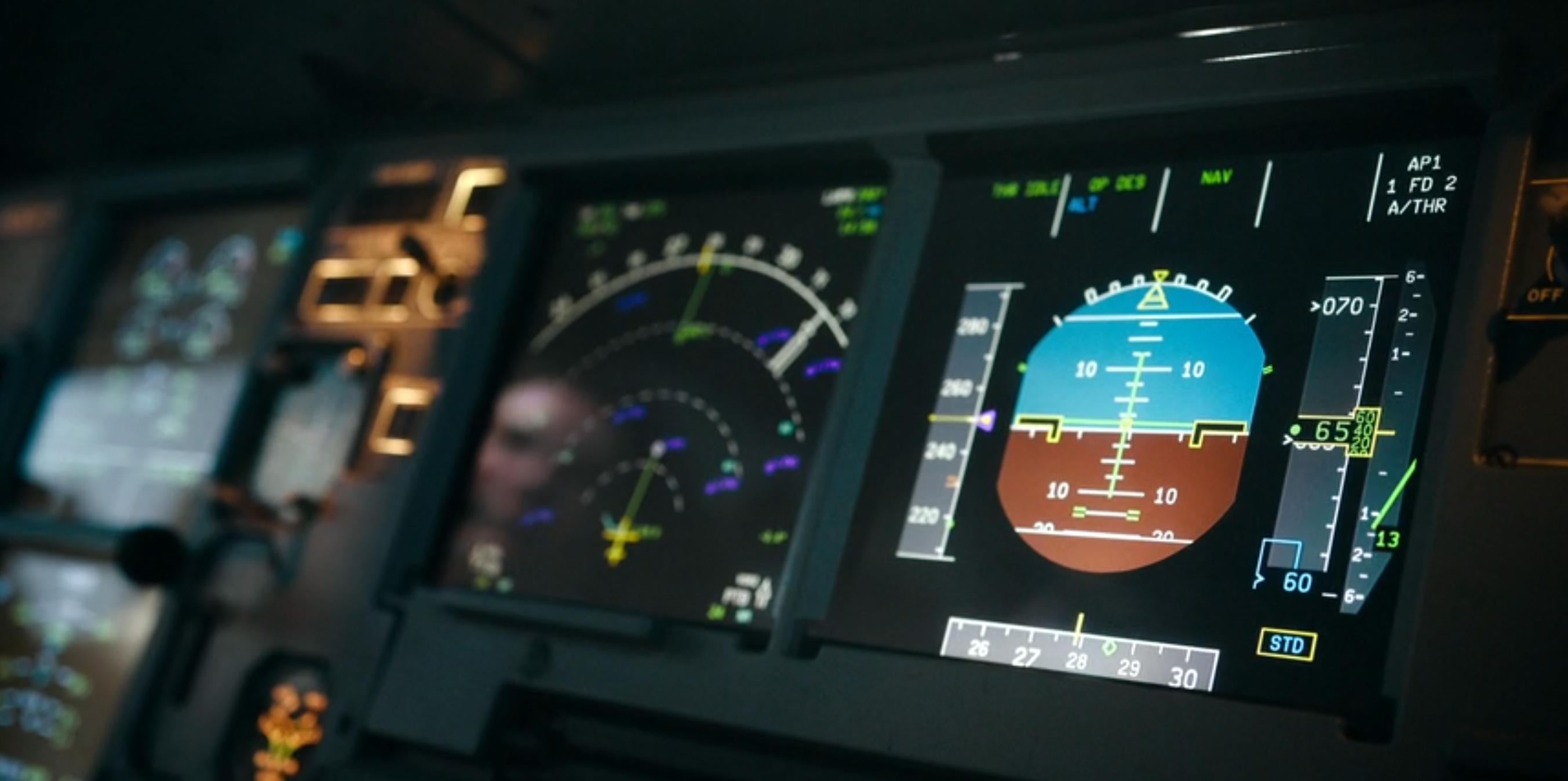
Regarding the landing configuration, there are several issues. The aircraft is approaching runway 29, which has an Instrument Landing System (ILS) approach, no ILS frequency has been set though. However, it doesn't seem like Anna is attempting a VOR landing, as the Navigation Display (ND) shows a straight line to the runway. The speed is too high, and the Primary Flight Display (PFD) only shows Autopilot 1 engaged, whereas both Autopilots 1 and 2 are typically engaged during this phase. The aircraft is still in open descent (OP DES) mode, descending to 6000 ft. It might be possible that Anna planned to configure the aircraft for the final landing approach after reaching 6000 ft. Additionally, auto brakes are not set, which is a crucial aspect of landing preparations.
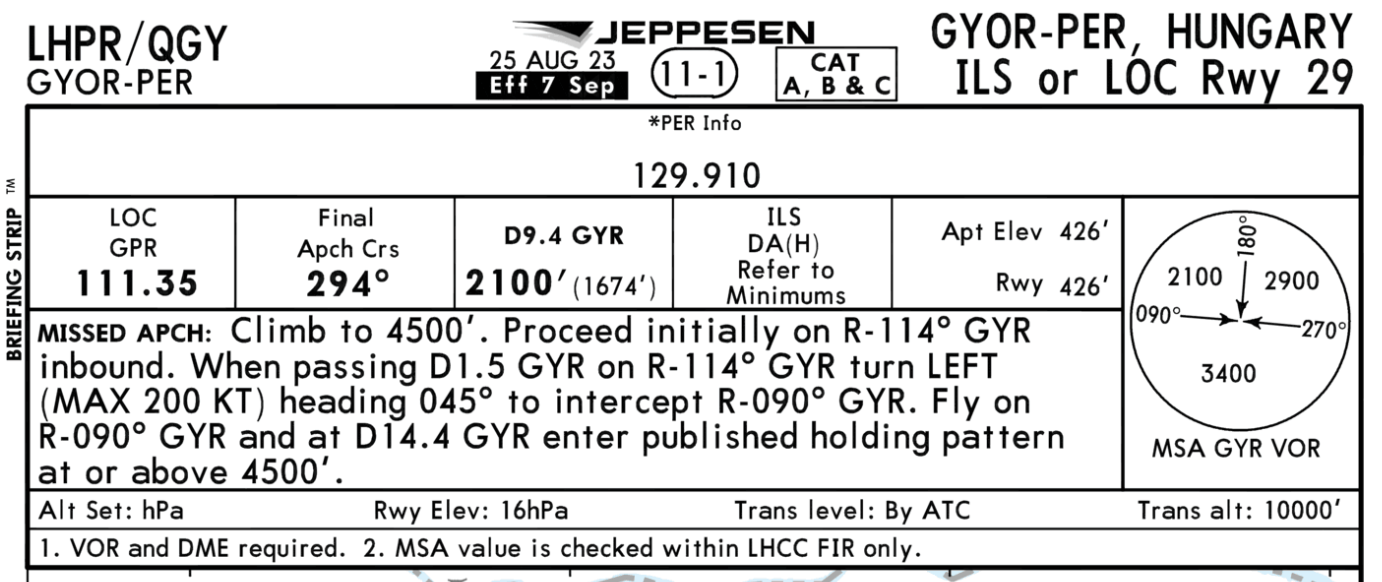
Moreover, the transition altitude in Hungary is 10,000 ft, and the aircraft still has the standard pressure setting (STD) selected, as indicated by the yellow outlined box with STD written in it. Without setting the actual Qualified Natural Horizon (QNH) pressure, the altitude information is incorrect, potentially leading to a premature descent and collision with the ground.
🔺 76. Rejected Landing (43:06): In the following scene, Anna executes a left turn towards the runway, which deviates from the straight-in approach we saw before. While Required Navigation Performance (RNP) or VHF Omni-Directional Range (VOR) approaches do involve turns, the airport charts indicate that these turns should typically be to the right, not to the left.
Anna receives instructions to reject the landing and continue with the original flight plan. She selects a new altitude in the Flight Control Unit (FCU) to initiate a climb back to the cruise altitude. During this process, both speed and heading are in managed mode, indicating that the aircraft is returning to the planned flight route.
However, the aerial view of the aircraft flying over the airport depicted in the show is not accurate. The aircraft was still at a high altitude when the rejection was initiated. To be accurate, the decision to initiate the rejected landing would have needed to be made over the runway threshold. The aircraft in the show appears to be much closer to the airport than it would be.
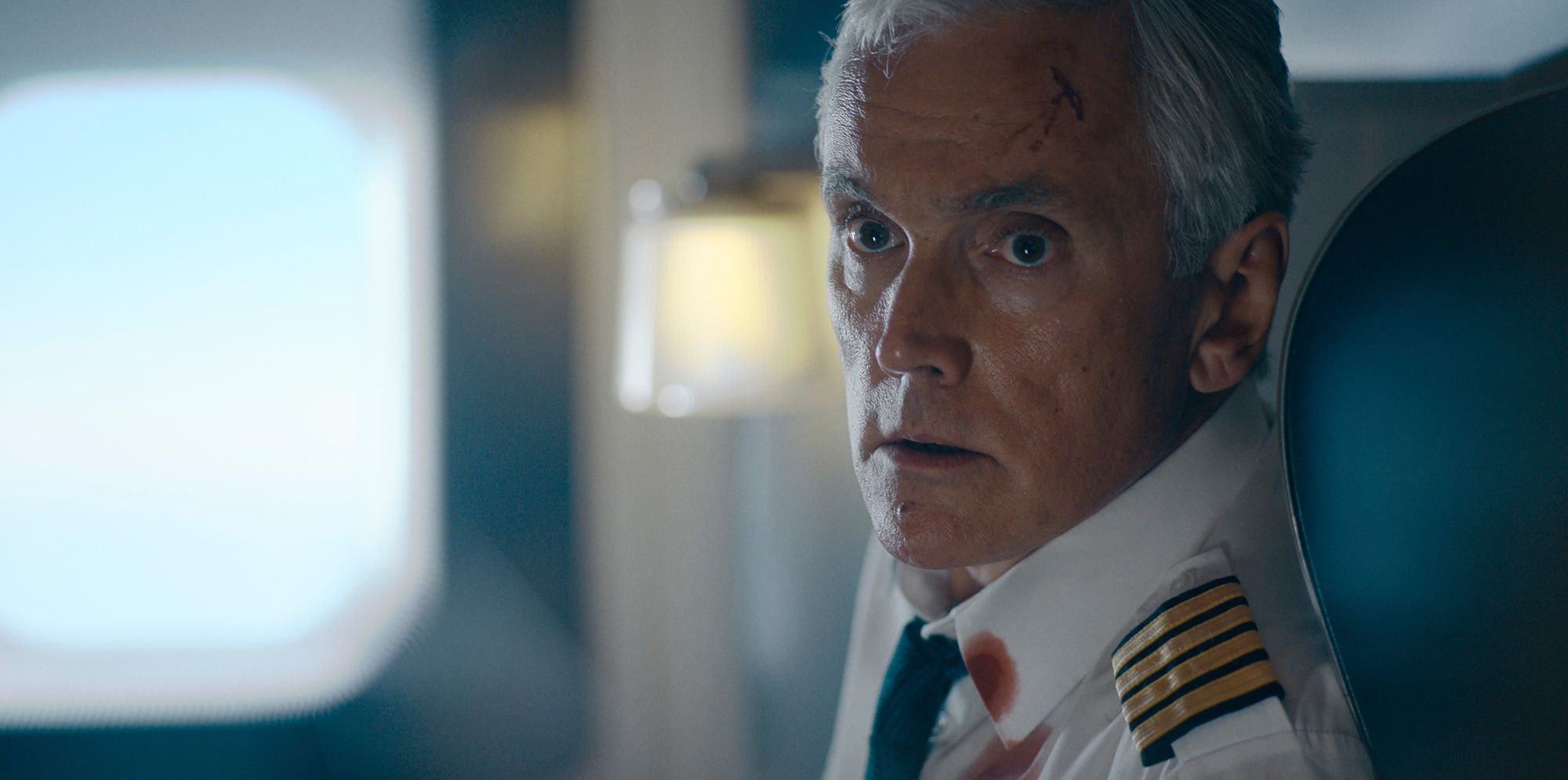
Comply Slowly
Episode 6
🔺 77. Media Leak (24:57): Most of the communication between air traffic controllers and the cockpit has occurred on public emergency frequencies. Pilots, search and rescue institutions, and ground stations are instructed to monitor these frequencies to offer assistance in case of an emergency. These exchanges could also be picked up by amateurs if the aircraft was within their range. Therefore, I believe this situation would have already been widely reported in local media, subsequently spreading to international news outlets before catching the attention of the British media.
🔺 78. ATCs Providing Intel During Car Chase (37:30): It is highly implausible that the entire air traffic control unit would be convened in a situation room alongside counter-terrorism officers and two ministers of state. While considering possible airfields in the vicinity might require a call, it would likely be a single call to share information. Basic details about nearby airports should already be available in a comprehensive database accessible to security forces.
Moreover, one of the air traffic controllers in the show is seen offering estimations on how many minutes a car is away from an airport, which falls far outside their expertise and job responsibilities. Such detailed ground-level information would be better handled by local law enforcement.
🔺 79. Passenger Manifest (38:40): I have not found any evidence indicating that air traffic controllers have access to passenger manifests, including their phone numbers. Moreover, calling passengers based on this information falls well outside the scope of responsibilities, authority, and expertise of air traffic controllers. Such actions are typically handled by intelligence agencies or relevant law enforcement authorities.
During this incident, the entirety of the UK airspace remains occupied with numerous aircraft that demand the controllers' attention. Managing flight traffic and ensuring the safety of ongoing flights are primary tasks that require their full focus. Engaging in activities beyond their core duties would strain the resources and efficiency of the air traffic control centre, making it impractical to divert their attention to tasks such as contacting passengers directly. Air traffic control units are notoriously understaffed, often leading to flight delays and cancellations on a large scale.
🔺 80. Bubble (38:46): While the idea of keeping KA29 away from other aircraft may seem prudent, the supervisor's commands to involve the entire unit in this task may not be the most efficient approach. Typically, such tasks are handled by controllers in specific sectors. The primary focus should be on anticipating the potential actions of the KA29 hijackers once the aircraft enters UK airspace.

Brace Brace Brace
Episode 7
✅ 81. Deleting Flight Plan (01:28): Amanda correctly presses the buttons on the Multi-Function Control and Display Unit (MCDU) to switch to a second navigation database, effectively resetting the flight plan. While this action is accurate, in real-life situations, pilots would typically switch back to the primary database, which is more up-to-date.
While I haven't personally reset a flight plan mid-flight, logically, without a flight plan in the MCDU, managed mode shouldn't be active. Therefore, the dashes and dots indicating speed and heading controls in the Flight Control Unit (FCU) should have reset as well. However, this is not reflected in the scene.
🔺 82. Disabling Autopilot (01:32): Amanda presses the AP1 button to disengage the autopilot and then selects an altitude of 3,000 ft. The issue here is that most functions in the Flight Control Unit (FCU) are operated by the autopilot. Without the autopilot, manual control using the side stick is necessary. Autopilot functions, such as heading, altitude, and vertical speed, can be individually enabled or disabled. However, the AP1 switch still needs to be enabled.
The altitude knob includes a switch that allows adjustments in increments of 100 or 1000 feet. In this scene, the switch is set to 1000, so it's inaccurate that the values are not reducing by thousands. This inconsistency is corrected when the camera perspective changes.
🔺 83. Confirmation on the Bubble (04:55): Recall the moment when the ATC supervisor abruptly snapped out of his passivity to order the entire ATC unit to establish a protective perimeter around KA29 (see #78). It was later revealed that he made this decision without consulting his superior first, and upon his return to the room, he confirmed the establishment of the protective zone.
The supervisor directs his unit to request the clearance of one runway at all London airports. While this instruction may sound reasonable, it is ineffective. First, it comes too late as the aircraft is just 7 minutes away from entering the airspace, rendering it ineffective. Second, there are six airports in London served by airlines, and only two of them have more than one runway. Third, with KA29 approaching London, the 25-mile protective zone will soon prohibit any air traffic at these airports. Once the aircraft enters Central London, all airports, except for Southend, fall within this radius. However, as Southend lies along the inbound flight route, it would be first to close (in 3 minutes to be exact) and remain closed. Considering the aircraft is a moving target, the protective zone effectively extends beyond 25 miles in front of its heading to adequately prepare for its arrival.
🔺 84. Not Enough Fuel (05:04): Alice asserts that KA29 won't have enough fuel for Bristol after the Hungarian route deviation. Firstly, Bristol Airport's runway, at 2011 meters, is too short for an A330 aircraft. Secondly, the route taken was not a detour; it was on the original flight route. However, the unplanned landing attempt followed by a climb back to cruise altitude did consume excessive fuel. This factor is typically accounted for in fuel planning, with airlines and pilots including extra fuel for a certain number of landing attempts and a diversion to an alternate airport. The choice of an alternate airport is strategic, considering factors like weather systems. Airports further away, such as Manchester Airport, would likely have been selected as alternates. Without attempting a landing in London, a direct flight to Manchester could have been a feasible option.
🔺 85. It is My Flight (05:21): The ATC supervisor asserts that they will hand the situation over to the Royal Air Force (RAF). In response, Alice firmly states that it's her flight and she won't relinquish control. The supervisor then inquires about their efforts to contact passengers using the mobile phone manifest (see #77 for my thoughts on this). Upon confirming their attempts, he says, 'THEN if we make contact, we're handing it over to the RAF.' The ambiguity here lies in what 'then' refers to. Is it when they make contact with a passenger or with the aircraft?
The air traffic controllers overseeing the London Flight Information Region (EGTT) operate from the London Air Traffic Control Centre in Swanwick, Hampshire. By now, the RAF team stationed there would have taken command. The process of scrambling jets to intercept civilian aircraft is formally known as Quick Response Alert (QRA) response in NATO member countries. The authority to initiate a QRA response rests with The National Air and Space Operations Centre (NASOC) at RAF Air Command in High Wycombe, Buckinghamshire. It's essential to note that in such situations, air traffic controllers do not have the jurisdiction to interfere, as these critical decisions are made at higher military command levels.
🔺 86. Cockpit Door Camera (06:30): Sam attempts to persuade Amanda to open the cockpit door. In the background, there are two screens displaying footage from the cockpit door camera, which is not a feature in the A330. Similarly, the panel in the main instrument panel does not align with the A330's or A320's design. The A320 does have a permanent camera screen above the circuit breakers, as shown in Airbus's 360-degree cockpit view. In practice, most pilots would likely access surveillance camera footage on the lower Electronic Centralised Aircraft Monitoring (ECAM) screen by pressing the video button.
✅ 87. Cockpit Door (06:30): As mentioned in #16, there is a method to access the cockpit, but Amanda, being familiar with the cockpit, might have prevented this technique from working. The procedure involves entering an emergency access code, known to both flight and cabin crew, into the keypad. This action triggers a timer (ranging from 15 to 120 seconds) inside the cockpit, during which the pilots receive continuous audible warnings. They must respond by selecting 'Lock' to maintain the door's security. If they fail to do so, the door will unlock for 5 seconds. We can assume that Amanda would have chosen to 'Lock' the door.
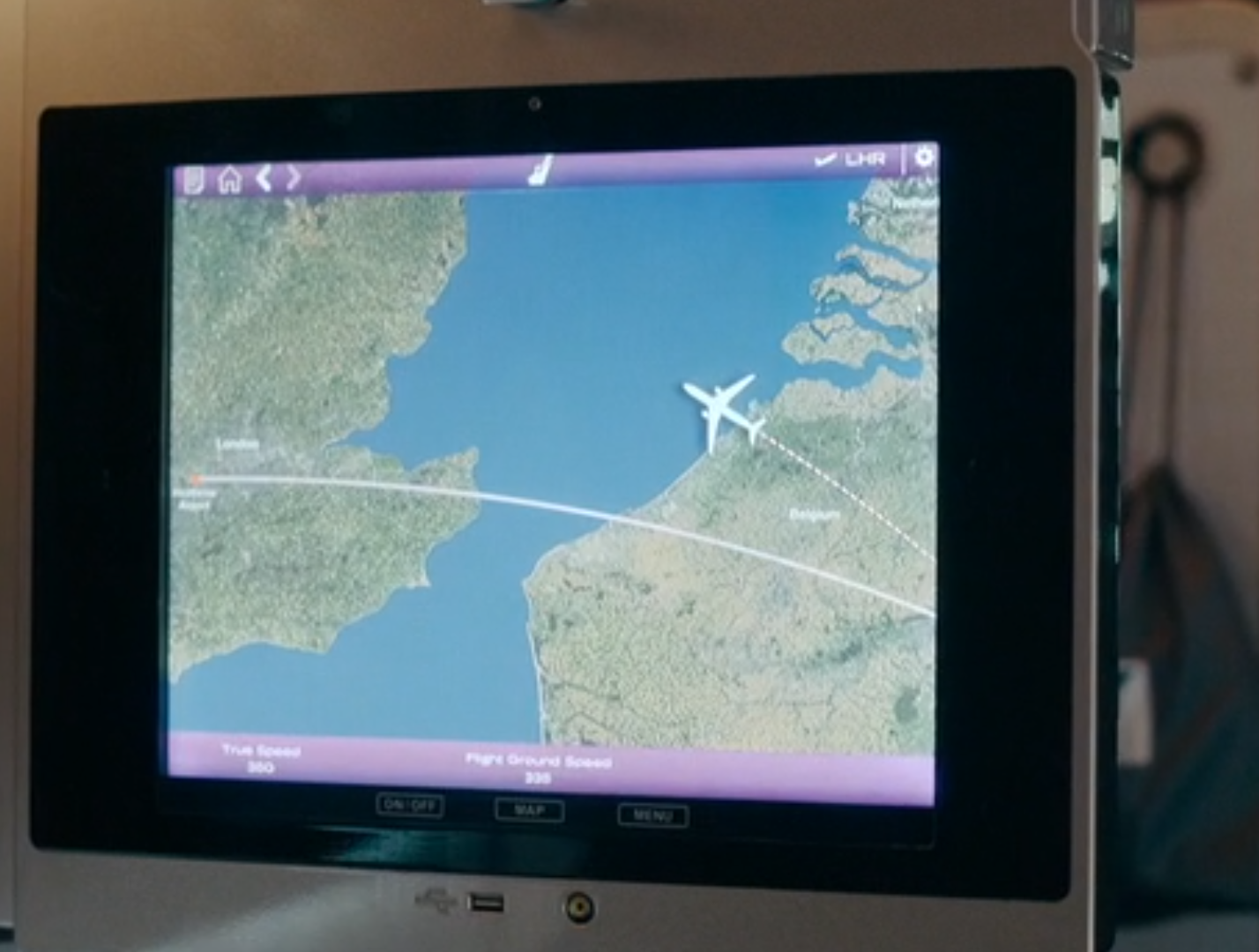
🔺 88. Heading to Central London (10:17): Passengers and air traffic controller Alice observe that the aircraft is significantly deviating to the right of its course. Alice alerts the situation room, stating that the plane has altered its heading from Heathrow to Central London, indicating a worsening situation. However, this development is implausible since London Heathrow is indeed located in Central London. Typically, flights approaching Heathrow from the east fly over Central London. This fact is evident in the flight progress map, where London is marked on the original route, while the actual flight path diverges, likely towards Birmingham. The aircraft eventually veers left, returning to its original course towards London.
Furthermore, I couldn't find any information on a 'code one situation' through my research. Thus far, I've only come across references to this term in the context of medical emergencies.
🔺 89. Quick Reaction Alert (10:17): Five minutes earlier, the ATC supervisor mentioned that the RAF had already scrambled jets. Now, in the situation room an official contradicts with the fact that the RAF has received clearance to launch jets, and they have a 5-minute window to make a decision. Which one is true?
✅ 90. Risk of Being Shot Down (14:20): Neil, the leader of the hijackers, wisely suggests not allowing anyone to speak with the outside world, as any mention of our lack of control over the plane could trigger the scrambler jets to receive the command to shoot the aircraft down. This concern is entirely plausible. Refer to #91 for additional thoughts on this matter.
🔺 91. Disengage (20:03): In contrast to what happened in #66, the command to disengage yet maintain visual contact makes more sense. It is a more sensible approach than immediately returning to base. The break-away manoeuvre was executed over Dartford or Tilbury, indicating that the aircraft was already above land when the decision was made. However, the decision not to shoot at that moment wouldn't necessarily require a disengage command, the status quo of escorting the aircraft was fine. Finally, the civilian ATC supervisor should have had no role in passing the disengaging command to RAF officers, who turned to pass the message on by foot.
✅ 92. Dartford (20:26): From this aerial perspective, it appears to be Dartford and Tilbury, with the Queen Elizabeth II Bridge in view, which is practically London. The location and aerial view are accurate.
🔺 93. Decision to Not Shoot (20:26): Despite several hours passing, there has been no visible improvement in the situation. With the confirmed presence of an active operative in the cockpit, who had previously shot someone, the aircraft has transitioned from being rogue to undeniably hostile. The threat to the public has escalated significantly. Given the absence of information about Amanda's piloting qualifications, the assumption would err on the side of a potential collision rather than a successful complex landing. In English law, specifically under the Criminal Law Act 1967 and Article 51 of the UN Charter, the use of lethal force is considered justifiable under these circumstances. In light of these factors, my strong conviction is that the scrambler jet pilots would have received the command to shoot to neutralise the imminent threat.
✅ 94. Altitude over Central London (26:38): Commercial airliners flying low over Central London is a daily common sight. Medium-sized aircraft, such as Embraer 195s inbound for London City Airport, often make turns over Central London and fly left of the skyline depicted in this scene, including Canary Wharf. Aircraft inbound for London Heathrow Airport typically make their final turns onto the approach course over Central London. However, the altitude of KA29 is indeed lower than normal, making it an out-of-the-ordinary sight.
🔺 95. Second Cockpit Door Camera (29:53): There is no second camera on the side; the only camera is from above. Its positioning also seems too low, considering that Sam has to crouch. The camera angle appears impractical, as if it's meant to capture an attendant's crotch rather than the overall scene. Furthermore, the random switches between camera feeds on the screen without any control input is implausible.
🔺 96. Altitude Dropping (30:12): Information is being passed that the aircraft's altitude is still dropping. However, aerial and cockpit scenes depict a straight and level flight attitude, indicating no bank or pitch changes. This contradicts the reported altitude drop. If the aircraft had indeed continued to lose altitude as previously stated, it would have likely collided with the ground by now.
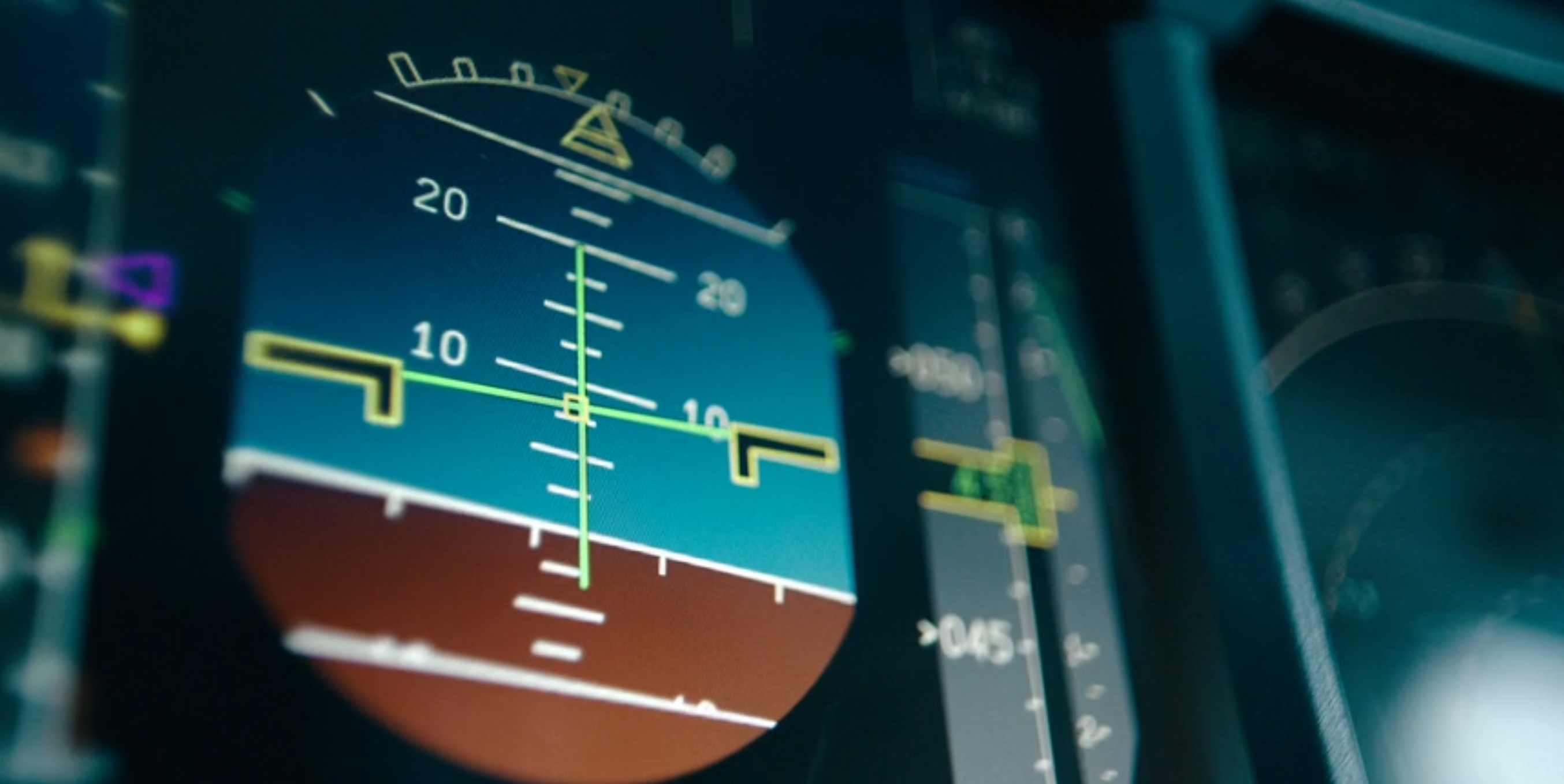
🔺 97. Terrain Ahead! Pull Up! (34:54): There's a lot to unpack here. The 'Terrain Ahead! Pull Up!' warning is typically issued by the Ground Proximity Warning System (GPWS) when it detects rapidly decreasing terrain clearance with an imminent risk of impact.
Firstly, as far as I understand, this warning message is usually displayed in red, and would trigger what's known as the Master Warning. This is typically followed by a loud audible warning that requires the pilot to silence it by pressing the Master Warning push button. This is missing here.
Secondly, since the aircraft is not in a landing configuration (such as having the landing gear extended), we should have heard 'Too low! Terrain!' caution and 'Five hundred' advisory callouts earlier in the sequence.
Thirdly, in the initial scenes, it appears that the nose of the aircraft is pitching down, but in the subsequent scene, the Primary Flight Display (PFD) shows the aircraft pitching up, gaining about 1,500 feet per minute and crossing 470 feet. These discrepancies between the PFD readings and the aerial scenes do not match.
Fourthly, the PFD displays a green cross overlaid on the attitude indicator. This is likely the Flight Director (FD), which provides guidance on how much pitch and bank correction is required to follow a specific trajectory. If the autopilot is engaged, it will automatically apply these corrections. However, if it's disengaged, it's the pilot's responsibility to follow these indications using the side stick. In this case, Amanda appears to be following these indications impeccably accurately by hand which is doubtful given her mental state. However, I'm not entirely certain if the flight director would display at all in this particular scenario. It appears as though this footage was recorded during a normal take-off.
Lastly, the 'sink rate' warning is heard, but this is typically triggered by a rapid descent rate, we do not seem to sinking though.
Overall, there are several inconsistencies and inaccuracies in this scene related to aircraft warnings and displays.
🔺 98. Just Sam (35:22): Amanda's decision to allow only Sam into the cockpit, fearing a possible revolt from the passengers, raises several concerns given her background as an aviation consultant with Navy experience. Typically, aviation consultants focus on the commercial or engineering aspects of airlines. While there might be flight crew consultants, they usually require former piloting experience to be considered qualified. Amanda's flying experience likely extends to simulators.
In this critical situation, excluding the capable first officer, who is right behind the cockpit door, seems questionable. Moreover, having the first officer alongside would have been a reassuring presence for the distressed passengers. Instead of the first officer behind the door, Sam seeks help from a remote air traffic controller.
🔺 99. Maximum Speed (36:59): In this scene, the Primary Flight Display (PFD) on the first officer's side unexpectedly displays a maximum speed (Vmax) of 200 kt, indicated by the lower end of the red and black strip along the speed scale. Typically, this value represents the lowest of a) Maximum Operating Speed (Vmo) or Maximum Operating Mach Number (Mmo), b) Maximum Landing Gear Extended Speed (Vle), or c) Maximum Flaps Extended Speed (Vfe). The A330 has a Vmo of about 330 kt, so the displayed 200 kt is puzzling. Considering there are no landing gear or flaps extended, this discrepancy could be due to an alternate configuration used during filming, deviating from the depicted in the scene. Above image shows the PFD at 37:59 which indicates that this deviation continues throughout the episode.
🔺 100. ATC Instructing How to Land (37:00): Alice's statement that she intends to guide Sam on landing the plane is, as I'm sure you have noticed yourself, highly implausible. Air traffic controllers lack the necessary qualifications and expertise to provide piloting advice. It is highly unlikely that she would possess not only the knowledge to operate this specific aircraft type, the Airbus A330, but also have memorised intricate emergency procedures, the Flight Crew Operating Manual (FCOM), and the Quick Reference Handbook (QRH). Even seasoned A330 pilots rely on these references, as the complexity of modern aircraft systems and emergency protocols demands adherence to established procedures.
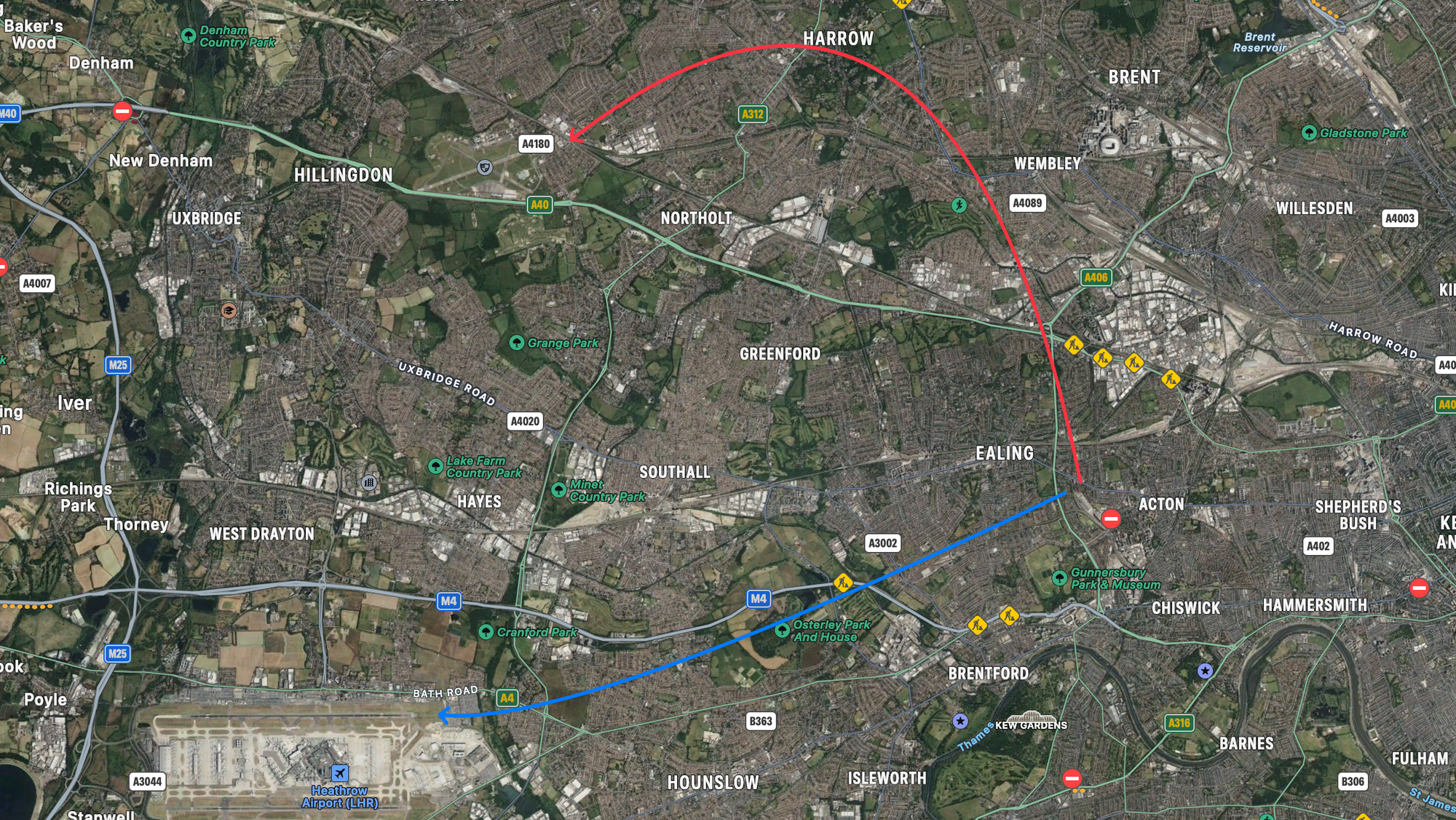
🔺 101. Right Turn, Discarding Heathrow (37:08): Two minutes earlier, the aircraft was depicted above Westminster, heading west towards Buckingham Palace and Hyde Park. Assuming a constant speed of 200 kt, as shown on the first officer's Primary Flight Display (PFD) at 36:59, in two minutes, the aircraft should have been over Ealing. At this point, Amanda had already decided to cooperate.
What baffles me is her subsequent decision-making. Just 45º to her left and less than two minutes away lay one of Europe's largest airports, London Heathrow. The logical choice would have been to turn slightly left, heading towards Heathrow. However, she unexpectedly turns right, squandering their chance to reach Heathrow.
This decision left me utterly astonished. A prompt left turn, instructed by Alice, could have potentially given them a chance to make it to runway 27R at Heathrow, especially if they were at 1,500 ft and descending at a rate of 500 ft per minute. Instead, valuable time was wasted on indecision, and the aircraft eventually ran out of fuel, forcing them to search for an emergency landing spot. Immediate instruction by Alice was essential in this critical moment yet wasted by asserting phrases, as discussed in the previous point.
🔺 102. Flaming Out (37:28): Flaming out refers to the condition when aircraft engines run out of fuel, causing the flame in the combustion chamber to extinguish. As mentioned earlier (#84), airlines and pilots meticulously plan for contingencies in fuel calculations by incorporating extra fuel for unexpected events, including multiple landing attempts and diversions to alternate airports. The selection of an alternate airport is a strategic decision, taking various factors such as weather conditions into account.
Considering these considerations, airports located at a significant distance, such as Manchester Airport, are often chosen as alternates. Consequently, there should have been a substantial amount of reserve fuel, enough to sustain the aircraft for at least 30 to 60 minutes.
🔺 103. Heading and Altitude (37:36): The controller's request for the current heading is redundant, given that this information is displayed on her screen. However, ensuring the altitude shown in the cockpit is correct the current Qualified Natural Horizon (QNH) pressure setting needs to be selected, which is typically provided by the controller during the approach clearance had pilot's made a normal approach.
🔺 104. APU and Ram Air Turbine (39:11): This particular scene made me shake my head in disbelief. Firstly, the notion of an air traffic controller providing such detailed piloting instructions, as discussed in #96, continues to baffle me. Secondly, the suggestion of using the Auxiliary Power Unit (APU) as a power source is deeply flawed. The APU, a combustion engine, relies on fuel, which we don't have access to in this scenario. While it can function as a backup power source, it's useless without fuel.
Thirdly, Alice requested the deployment of the Ram Air Turbine (RAT). The RAT is a wind turbine that automatically deploys under the 3rd flap track on the right wing when all other power sources fail, providing vital electrical and hydraulic power to control the aircraft. There's no need for manual activation of the RAT on the A330. While it shows that there has been some research into how one can still control an aircraft after an engine flameout, a more accurate directive would have been to verify if the RAT has been deployed or, more simply, if they still have control. Amanda frantically pressing buttons on the overhead panel is implausible, though.
✅ 105. Motorway (39:38): Amanda asks if she can land on the motorway below, to which Alice tells her to stop talking about motorways. While motorways can serve as emergency landing options for smaller aircraft, a heavy airliner like the A330 is too wide for motorways. Several factors, including obstacles such as crash barriers, make a landing attempt on a motorway extremely risky. In the specific motorway section she points at, we can observe a long S curve, indicating that it is not suitable for an emergency landing. It's worth noting that there are designated highway strips or road runways, which are sections of motorways designed to be transformed into temporary runways within a day. However, these strips are purpose-built for such situations and are not standard motorway sections.
✅ 106. RAF Northolt and Reverse Thrust (40:24): Alice reports that Northolt is ready with a 5,000 ft runway, to which Amanda responds that it is not long enough and they lack reverse thrust capabilities. To be precise, Northolt's runway is actually 5,500 ft (1,674 m) long, and the required landing distance is approximately 1,750 metres – I'm having difficulty finding precise information about the landing performance. As there is no fuel, the engines are not running, which means there is no source of power for reverse thrust, typically used to decelerate the aircraft during the landing roll. Consequently, the aircraft would need more than 1,750 metres for a safe landing. Both responses are indeed accurate. Nonetheless, they are going for it.
✅ 107. Landing Gear Instruction (40:33): Alice suggests dropping the landing gear as late as they can; otherwise, they won't make the runway. Extracting the landing gear creates significant form drag, which is detrimental to gliding distance. However, they would need to know how long it takes for the landing gear to be extended to make the call when to extract later.
✅ 108. Left Bank (40:44): Amanda is executing a steep left turn to align with the runway. It is advised to head straight to the direction of a landing field then while you are closing the distance figure out the wind and runway directions. In smaller aircraft we can make incredibly sharp turns yet a commercial airliner needs a wider radius.
During a turn, the more bank is applied, the load factor increases as there is more effective weight on the wings. The speed at which the wing no longer generates lift and the aircraft begins to fall is called stall speed. The stall speed increases in proportion to the square root of the load factor. In simple words, you need to increase your speed for turns. Given that KA29 does not have operative engines, they can't do that. The only other option to gain speed or to recover the aircraft when a stall occurs is to dive for which one needs altitude which is lacking right now as well.
In this case we see a 35º turn initiated at 165 kt indicated air speed in the Primary Flight Display (PFD). We can assume that flaps are not extended as we it would create drag which we do not want during an unpowered glide. The PFD is showing 135 kt as stall speed. 35º bank results in a load factor of 1.22. The stall speed in the turn would then be 149 kt. So theoretically it seems to be a possible turn although I still have doubts.
The sensation both of them have during the turn is plausible due to the increased gravitational force during turns.
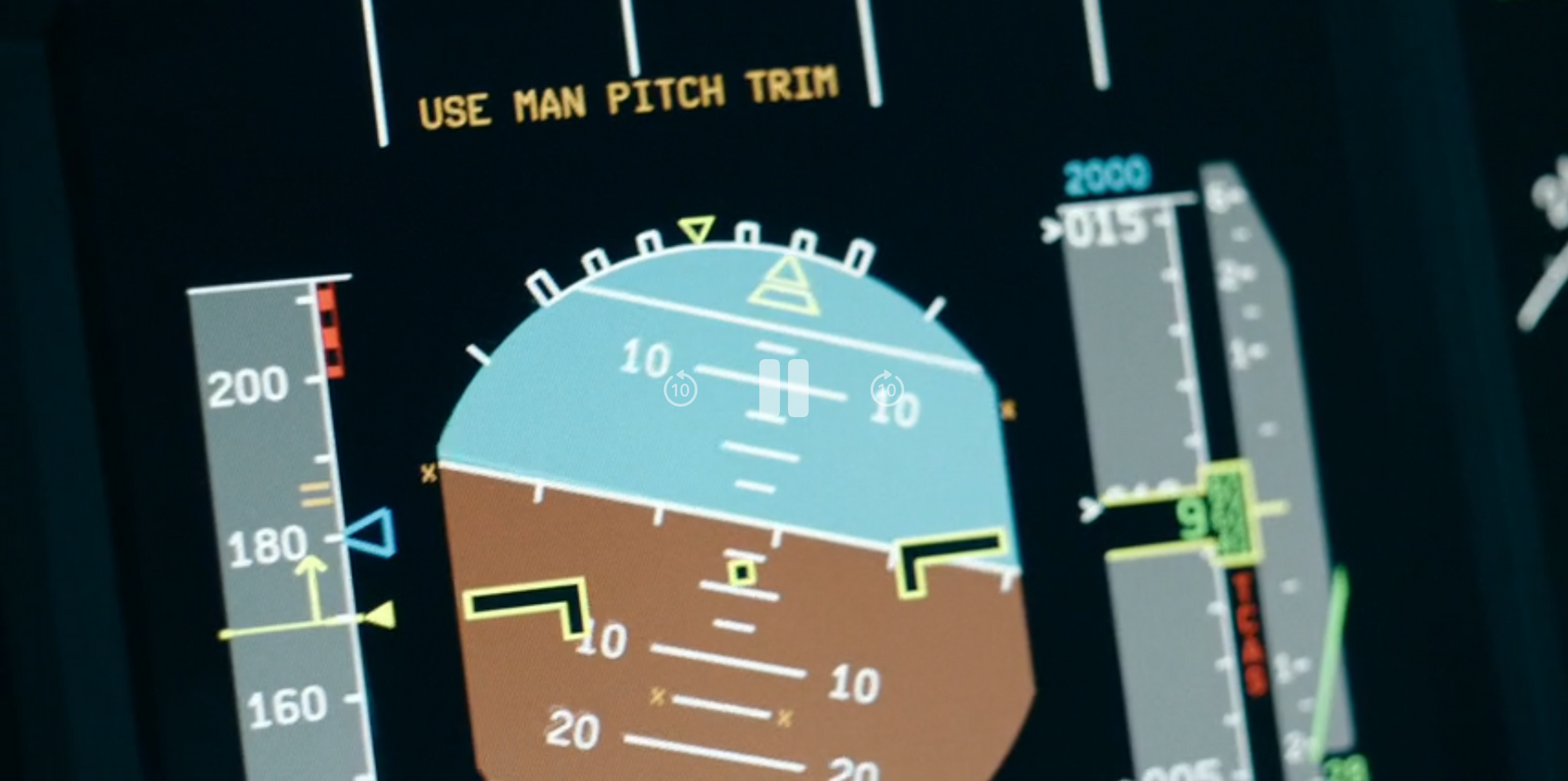
🔺 109. Alternate Law (40:52): The Airbus design philosophy has the flight control laws Normal, Alternative and Direct. I'm not going into details about their differences. When the Ram Air Turbine (RAT) is deployed only certain systems in the A330 are powered so that the flight control systems cannot operate in full capacity. The aircraft is changing to Alternate Law. There are certain clues such as 'X's in various places in the Primary Flight Display (PFD) indicating that the aircraft is in Alternate Law.
In this case, there is also 'USE MAN PITCH TRIM' written at the top of the PFD, indicating that the aircraft is in Direct Law. However, I believe this would only happen after the landing gear is retracted.
✅ 110. Harrow (41:01): The map is showing the aircraft turning over Harrow which is correct, the location depicted is on the approach course of the runway they are heading to.
🔺 111. Would They Made it to Northolt? (41:09): The distance between Harrow and RAF Northolt is just above 3 nautical miles, requiring just over a minute to reach the runway threshold if the aircraft maintains its speed.
The Primary Flight Display (PFD) shows an altitude of 940 ft, with RAF Northolt's elevation at 124 ft, meaning the aircraft is only 816 ft above ground level (AGL). The real issue lies in the vertical speed indicator, indicating a descent rate of -2,700 ft per minute. This means the aircraft is descending rapidly at a rate of 2,700 ft per minute. Although we do not get to see the PFD again, the aerial view suggests that the vertical speed is being corrected.
However, recovering vertical speed in such a situation would require sacrificing airspeed. Finding the right combination of airspeed and vertical speed to reach the runway is highly unlikely, the chances of successfully making it to the runway at RAF Northolt under these conditions appear impossible.
✅ 112. Gravity Landing Gear Requirement (41:36): Amanda instructs Sam to lower the landing gear manually. Despite the power provided by the Ram Air Turbine (RAT) to the green hydraulic system, it's insufficient to operate the landing gears effectively. In situations of engine failure, the Quick Response Handbooks (QRHs) outline procedures for manual, or gravity, landing gear extraction, primarily relying on Earth's gravitational forces for extraction. While the nose wheel operates on the same principle, the presence of wind aids in pushing the wheel into its correct location.
🔺 113. Gravity Landing Gear Handcrank Location (41:38): In the A330, the gravity landing gear handcrank is positioned on the main instrument panel and operates differently from what is depicted here. The scene shows the location in the A320, as discussed in detail in #7.
✅ 114. Gravity Landing Gear Handcrank Operation (41:38): We've clarified the handcrank location in the previous point. If it were the A320, Amanda accurately describes the process. The lever is pulled up into position and then turned clockwise until it reaches a mechanical stop. The Quick Response Handbook (QRH) specifies three cycles, with specific actions occurring after each cycle. However, it also instructs to turn the lever until it can't be turned anymore. This detail is accurate.
🔺 115. Gravity Landing Gear Extraction (41:41): The scene depicts the main gear starting to extend. In Captain Joe's video demonstrating a gravity extraction on an A320, the main gear doors open less smoothly and at a slower pace compared to hydraulic extraction. Therefore, this scene appears to be a recording of a normal hydraulic gear extension.
✅ 116. Gravity Landing Gear Extraction Duration (41:41): In this A320 simulator video it takes about 37 seconds for the gears to be fully extended. I don't know the duration for A330. As often portrayed in films, the gears seem to lock into place just a split second before landing. In this particular film scene, the gear extension process takes 40 seconds. I consider this depiction reasonably accurate.
✅ 117. Sam to Press Pedals on Landing (41:48): Amanda instructs Sam to press the pedals upon landing as hard as he could. With both engines inoperative, the auto brake system and reverse thrusters are not viable options to slow down the aircraft. The emergency electrical power provides reduced pressure, requiring more force for certain actions, including braking. Braking from both positions probably helps in this situation.
✅ 118. Brace (41:59): I have not experienced this myself, but the brace commands from the cabin crew appear to be accurate.

✅ 119. Black Displays (42:08): Since we are in emergency electrical configuration, only three very specific screens are functional to preserve power for other critical systems. This detail is accurate as well.
🔺 120. Rudder Loss and Nose Down (42:30): In this scene, we observe the aircraft bouncing upon landing, and Amanda provides forward side stick control to bring the nose down. Firstly, applying forward input at touch down is not recommended; the nose will naturally descend in due course. Secondly, during the second touch down, the rudder detaches, causing the aircraft to abruptly pitch forward and damage the nose wheel. It's important to note that the rudder is responsible for directional control, not pitch. A pitch-down movement would require elevator control, not rudder input. So the loss off the rudder should not have caused this reaction.
🔺 121. Sparks from the Main Gear (42:34): In this scene, both the left and right wheels are shown to be on fire, causing spark flames. While brakes, especially when used with an auto brake system, can overheat and potentially lead to fires, the immediate appearance of spark flames is not typical. Overheated brake discs might turn red, indicating high temperatures, which could potentially lead to a fire shortly after, but the appearance of spark flames straight away seems exaggerated.
Contrarily, when the aircraft comes to a halt, the tires and brakes are free of any signs of overheating or fires. In reality this would be the time for possible fires.
🔺 122. Explosion (43:17): The collapse of the nose wheel leads to contact of the engines with the runway. The left one breaks off. A few seconds the right breaks off in a vast explosion. First, there was not any fuel left, so how is this explosion possible. Second, the explosion somehow didn't do any damage to the aircraft.
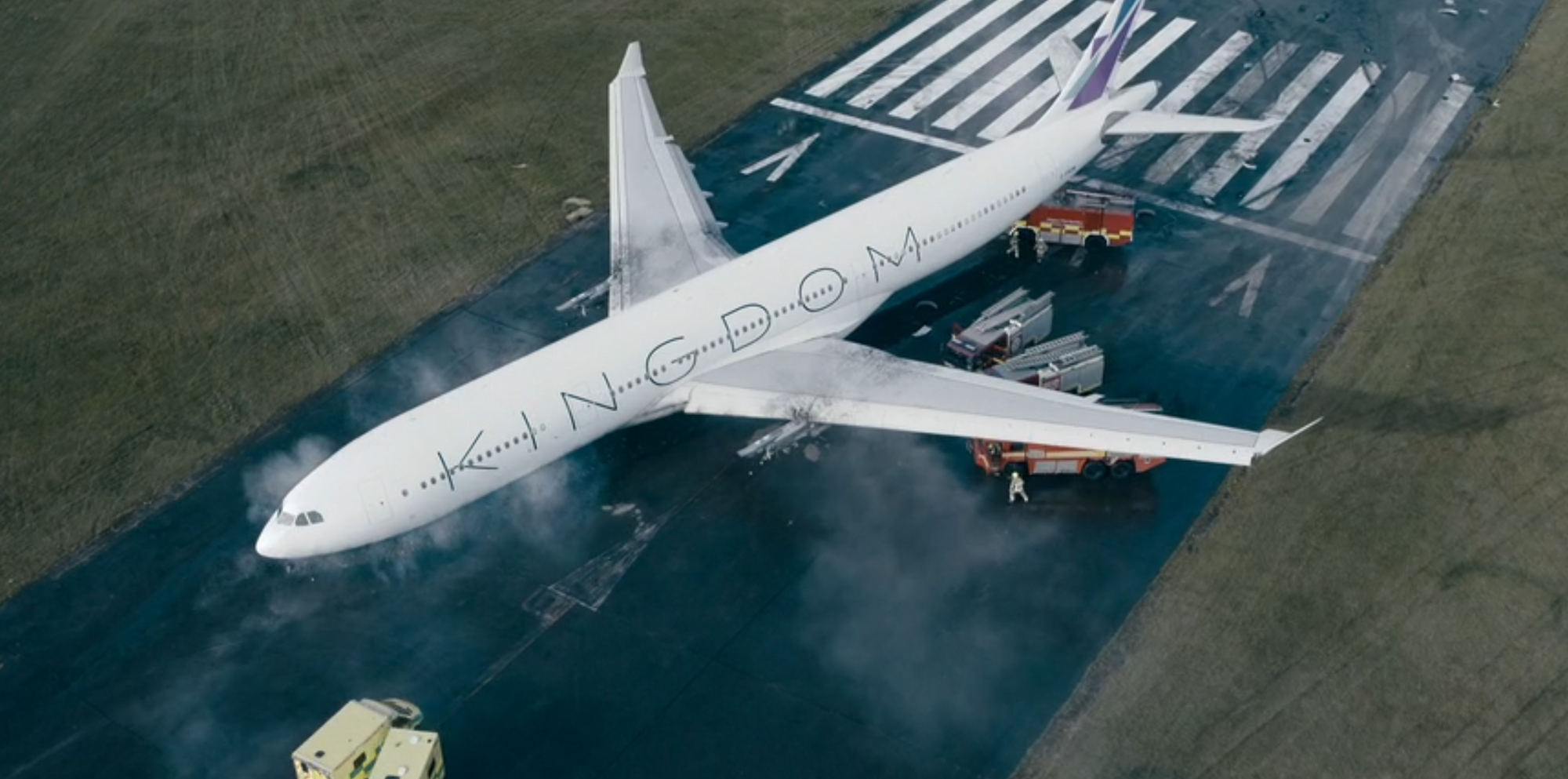
🔺 123. Stop (43:59): The aircraft eventually comes to a stop on the stopway, which is an optional extension of a runway only usable for stopping. Besides the fact that the runways at RAF Northolt do not have a stopway, it is a miracle that the aircraft has not skidded off the sides or the end of the runway.
🔺 124. Fire Response (44:02): The staircase truck and ambulances approach the scene before the firefighters even start their work. Given the explosion and burning brakes, firefighters would first need to douse the lower fuselage, wings, and gears in suppression agents. The area around the tires needs to be approached from the front or back, as the tires can burst at any time, potentially causing harm. Airport firefighters have equipment which let them spray agents as soon as possible from their trucks, even while they are still driving whilst firefighters in the scene are oddly carrying hoses around.
✅ 125. Rubber Jungle (44:21): In the cabin, you can see some overhead compartments open with luggage on the floor, and almost all oxygen masks have fallen off. This is apparently common after hard landings.
🔺 126. Evacuation? (44:30): Sam is chatting with Alice, people are exchanging glances and checking their phones. The crucial action of evacuation is missing. Every second counts. It's not over yet.

🔺 127. Emergency Exits (44:42): It appears that the cabin chief was waiting for a staircase truck to position itself in front of the second door. Are they seriously considering evacuating through just one door instead of utilising all eight available emergency exits? These exits are equipped with armed emergency slides, so by simply opening them, slides would deploy instantly, ensuring the swift evacuation of all passengers.
In fact, the cabin chief opens that single door without disarming the emergency slides, so that emergency slide would have deployed onto the truck.
🔺 128. Evacuate (44:50): Cabin chief, Deevia, finally calls out, 'Everybody off the plane. Remain calm.' However, the main issue with this scene lies in its lack of urgency. In reality, passengers would be panicking, potentially getting physical in their rush to exit the plane first. But the group that should be the least calm is the cabin crew. We should be hearing all cabin crew members urgently shouting 'Evacuate. Evacuate.' instructions.
Oddly, the only cabin crew member doing this, Deevia, quickly grows tired of it and turns her attention to the cockpit to chat with Amanda and Sam.
🔺 129. Closing Door (47:56): For some reason, the tactical team has all guns pointed at the door but has not entered the aircraft yet, even after Sam says he's going to be back and returns inside. The sudden ability for someone to close the heavy door without any practice, before anyone could react, is highly implausible.
